


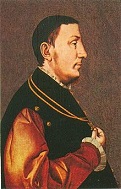





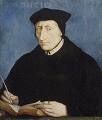

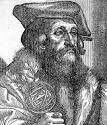




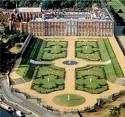



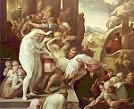
1530 Juan de la Barrera of Seville, Spain begins transporting African slaves directly from Africa to the New World, bypassing Europe, starting a stampede; a significant percentage are Muslim, but they have to convert to Christianity or face death; the African slave trade will eventually bring 10M slaves to America. About this time Muslim Barbary Pirates begin raiding the coasts of continental Europe and Britain, kidnapping 1.25M Christian men, women, and children by 1789 when the U.S. puts an end to it; according to observers by the early 1600s there are around 35K Euro slaves in the Barbary Coast towns of Tripoli, Tunis, and Algiers at any one time; between 1609-16 slavers capture almost 500 British vessels, plus 27 from Plymouth in 1625. On Jan. 5 (Dec. 26 Old Style) Mughal emperor #1 (since 1526) Babar (b. 1483) dies, and his son Humayun (Nasir ud-din Muhammad Humayun) (1508-56) becomes Mughal (Mogul) emperor #2 of India (until Feb. 22, 1556), going on to Persianize his court. In Jan. Spanish conquistador Francisco Pizarro (1471-1541) sets sail for Panama accompanied by brothers Gonzalo Pizarro (1510-48) and Hernando Pizarro (1508-78), plus a small group of recruits - with dreams of wealth and power dancing in their heads? On Mar. 23 HRE Charles V gives the three habitable Maltese islands (of five), Malta, Comino, and Gozo to the Knights of Rhodes (St. John) (Hospitaller) (until 1798), who change their name to the Knights of Malta, working to stem the Muslim threat on the Mediterranean; the capital Valletta occupies a rocky tongue of land 3K yards long, and the cathedral ends up housing tombs of the knights; St. Paul was supposedly shipwrecked in Malta in 58 C.E., making them feel cool about camping out there? In the spring James V of Scotland rides to the Scottish borders to get the border magnates to know who's boss, getting them to voluntarily imprison themselves (remain in ward) to demonstrate loyalty. In June after being crowned as HRE by Pope Clement VII (last imperial coronation by a pope), Charles V, egged on by the pope to go to war tries to be diplomatic and asks the Lutherans to present their beliefs at the Diet of Augsburg, hoping to bring them back into the Roman Catholic fold; on June 25 Philip (Philippus) Melanchthon (1497-1560) prepares the Augsburg Confession, codifying Lutheran doctrines, and it is signed by the Protestant princes, while the Roman Catholics (Johann Eck et al.) prepare the Confutation of Augsburg (Confutatio Augustana), rejecting the doctrines as heretical; the Diet recesses on Sept. 2, and Charles V gives the Lutherans until Apr. 15 of next year to conform or face the dreaded Imperial Cameral (Chamber) Court (Reichskammergericht) (created by the Diet of Worms in 1495); in Dec. eight princes and 11 cities of the Holy Roman Empire agree to form the Schmalkaldic League against Charles V and his Roman Catholic allies to defend against any possible attacks, and tell the court to shove it, causing the Holy Roman Empire to institute criminal code and police regulations. On Aug. 10 the combined troops of HRE Charles V and Pope Clement VII win their siege of Florence (begun Oct. 24), installing Alessandro de' Medici "il Moro" (1511-37) as the new ruler on May 1, 1532 (until Jan. 6, 1537); Philibet de Chalon (b. 1502) is KIA on Aug. 3, and is succeeded by his sister's son Rene (Renatus) of Nassau-Breda (Chalon) (1519-44). In Nov. Cardinal Thomas Wolsey (b. 1475) is arrested on a charge of high treason, and dies on the way to the Tower in Leicester Abbey; Thomas Cromwell (1485-1540) is sworn into the King's Council, and is sent to Rome with the earl of Wiltshire by the king to present his position regarding his requested marriage annulment; Henry VIII confiscates Wolsey's home (York Place), hiring Anthony van Wyngaerde and enlarging it into Whitehall Place for his white ho, er, babe Anne Boleyn, becoming the largest (albeit ugly) residence in Europe (cap. 600) and the seat of royal power until it burns down in 1698. Moldavian troops in the name of Ottoman Sultan Suleiman invade the Polish side of the Pokutia (Pokuttya) in the Prut River Valley S of the Dniester River; Polish king Zygmunt I Stary sends an envoy to the sultan, who replies that he didn't authorize it, and the Poles are free to kick them out as long as they don't invade Moldavia, and the Polish parliament levies a tax on the serfs to raise 4.8K cavalry and 1.2K infantry, led by Jan Amor Tarnowski (1488-1561). Duke Charles III of Savoy imprisons Swiss patriot Cluniac monk Francois Bonivard (1496-1570) in the dungeons of the Castle of Chillon on Lake Geneva near Montreux (until 1536), after which he goes Protestant, causing him to become the subject of Lord Byron's 1816 poem The Prisoner of Chillon; "Eternal Spirit of the chainless Mind!/ Brightest in dungeons, Liberty!" 20-something James V of Scotland spends most of this decade as Europe's most eligible bachelor, attracting offers from Denmark, Italy, France, and England, and getting wined and dined and awarded the English Order of the Garter, the French Order of St. Michael, and the Imperial Order of the Golden Fleece. In this decade the Spirituali movement in Rome arises to try to reform the Church from within without splitting like the Protestants; members later incl. English Cardinal Reginald Pole (1500-58), Italian Cardinal Ercole Gonzaga (1505-63), poet Vittoria Colonna (1490-1547), and her friend Michelangelo (1475-1564); Pope Paul IV (reigns 1555-9) later looses the Inquisition on them and destroys them by the 1560s, ending any hope for internal reform until the 20th cent. - the more the Church changes the more it remains the same? German Anabaptist Melchior Hoffman (Hofmann) (1495-1543) performs the first infant baptisms in Strasbourg, launching a struggle by the violent Anabaptist sect of German pastor martyr Thomas Muntzer (Müntzer) (1489-1525), leader of the German peasant uprising in 1525 in opposition to Martin Luther to take over the state of Munster (Münster); as Antinomians who believe that the "elect" can do no wrong, licentiousness reigns in their ranks. The Antwerp Exchange is founded. Francis I of France founds the College de France in Paris as an alternative to the Sorbonne after being influenced by Parisian #1 scholar Guillaume Bude (Budé) (1467-1540); it gives free public lectures but doesn't grant degrees; the motto is "Docet Omnia" (Teaches Everything); "Not acquired truths, but the idea of free research" by Maurice Merleau-Ponty is inscribed in golden letters above the main hall - I'm one well-rounded Frog? William Tyndale coins the word "Passover", followed next year by "Evangelical"; he also claims that "the properties of the Hebrew tongue agreeth a thousand times more with the English than with the Latin". Benvenuto Cellini makes the Morse (Cope) Button, a 6-in.-diam. round, flat gold gem-encrusted button with a diamond at the center and an image of God the Father, becoming the world's most valuable button; made for Pope Clement VII, it takes 18 mo. and a staff of 10. Titian goes to Bologna to paint HRE Charles V's portrait. Architecture: Hampton Court Palace in Richmond upon Thames, SW London (begun 1515) is finished. In this decade the 13m Lobnoye Mesto ("place of the forehead") is built in Red Square in Moscow in front of St. Basil's Cathedral, used for speeches and ceremonies by the tsar, almost never for executions. Inventions: Parisian publisher Claude Garamond (1480-1561) creates the Garamond Type Font, the first Roman type font; he is created "imprimeur du roi" by Francis I. The Italian game of Lo Giuoco di Lotto, predecessor of Bingo is invented. In this decade the bottle cork is invented in Europe. In this decade the spinning wheel comes into gen. use in Europe. In this decade the workman's bench comes into use in Europe. Science: Flemish cartographer Regnier (Reiner) Gemma Frisius (1508-55) proposes finding longitude by means of difference of times, causing Jean-Baptiste Morin to comment "I do not know if the Devil will succeed in making a longitude timekeeper but it is folly for man to try" - now all we need is a Mickey Mouse watch? Nonfiction: Otto Brunfels (Braunfels) (1488-1534), Herbarium Vivae Icones (3 vols.) (1530-6); illustrated by Hans Weiditz (1495-1536) of the Albrecht Durer school; greatly superior to existing pedantic herbals but makes the mistake of trying to compare Euro to ancient Greek and Roman flora and fauna. Martin Bucer (1491-1551), Confession Tetrapolitana; advocates Protestants praying the Hail Mary. Johann Eck (1486-1543), Operum Johannis Eckii Contra Lutherum (5 vols.) (1530-5). Desiderius Erasmus (1466-1536), A Little Book of Good Manners for Children (De Civilitate Morum Puerilium); address to 11-y.-o. Henry of Burgundy, son of Prince Adolph of Veere, telling him how to act in the presence of adults; English trans. pub. in 1532; "Young bodies are like tender plants, which grow and become hardened to whatever shape you've trained them" - I'm an expert on softball and soft law? Gemma Frisius (1508-55), De Principiis Astronomiae Cosmographicae; describes how longitude can be determined with an accurate enough clock. Franz Helm, Manual on Artillery; depicts rocket cats. Peter Martyr d'Anghiera (1457-1526), De Orbe Novo (On the New World) (posth.); describes first contact between Euros and Native Ams., and contains the first Euro ref. to India rubber; Opus Epistolarum (posth.); 812 letters to/from Spanish and Italian dignitaries in 1487-1525. Melanchthon (1497-1560), Apologia. Paracelsus (1493-1541), Opus Paramirum; introduces the system of salt, sulfur, and mercury in as the three "prime elements" from which all things are made, inventing chemical therapy and chemical urinalysis, suggesting a biochemical theory of digestion, and coining the term "tartar" for the stony crud on teeth (really saliva plus bacteria), becoming known as "the Father of Toxicology" (grandfather of pharmacology), and "the Devil's Doctor". Art: Antonio da Correggio (1489-1534), Adoration of the Shepherds. Lorenzo Lotto (1480-1556), Angel of the Annunciation. Francesco Primaticcio (1504-70), The Rape of Helena (1530-9). Il Sodoma (1477-1549), Ordination of St. Alfonso; Adoration of the Magi. Titian (1477-1576), The Death of St. Peter Martyr; Portrait of Cardinal Ippolito de' Medici; The Penitent Mary Magdalen (1530-5). Poetry: Fracastorius (Girolamo Fracastoro) (1478-1553), Syphilis, or the French Disease (Syphilis sive Morbus Gallicus); about a shepherd named Syphilis (who does it with sheep?), giving the venereal disease caused by the spirochete Treponema pallidum its name, containing the germ of the Germ Theory of Disease, later taken up by Louis Pasteur. Births: German duke of Saxony (1566-72) and Saxe-Weimar (1572-3) Johann Wilhelm (d. 1573) on Mar. 11 in Torgau; 2nd son of John Frederick I and Sibylle of Cleves. French Huguenot (Calvinist) leader Louis I of Bourbon, Prince of Conde (Condé) (d. 1569) on May 7 in Vendome; founder of the House of Conde, a cadet branch of the House of Bourbon. Italian cardinal Ranuccio "Cardinalino" Farnese (d. 1565) on Aug. 11 in Valentano; brother of Ottavio Farnese (1521-86); grandson of Pope III, who creates him cardinal at age 15. Grand prince of Moscow (1533-47) and tsar (czar) #1 of Russia (1547-84) Ivan IV (the Terrible) (Fearsome) (Grozny) Vasilyevich (d. 1584) on Sept. 3 (Aug. 25 Old Style) in Kolomenskoye; son of Vasily III (1479-1533); grandson and namesake of Ivan III the Great (1440-1505); son of an unsanctified marriage after daddy Vasily III goes childless for 20 years, does a Henry VIII and divorces his wife and sends her to a convent, then weds fertile 23-y.-o. babe Elena Glinska, causing a holy man to predict that the young tyke will make Russia run red with rivers of blood. English diplomat Sir Thomas Hoby (d. 1566); half-brother of Sir Philip Hoby (1505-58); educated at St. John's College, Cambridge U. Irish king Shane O'Neill (d. 167) in County Tyrone; son of Conn O'Neill, 1st earl of Tyrone (1480-1559). Polish Renaissance poet Jan Kochanowsky (Kochanowski) (d. 1584) in Sycyna. Irish Roman Catholic archbishop of Cashel (1583-4) Dermot O'Hurley (d. 1584) in Lickadoon Castle, Lickadoon, Ballyneety, County Limerick; descendant of the Dal gCais clan of Munster. English solicitor-gen. (1569-79) and lord chancellor (1579-87) Sir Thomas Bromley (d. 1587); 2nd son of George Bromley of Hodnet and Jane Lacon. English Puritan statesman-spymaster (nemesis of Mary, Queen of Scots) Sir Francis Walsingham (d. 1590) in Scadbury Park, Chiselhurst, Kent; English secy. of state (1573-90) under Elizabeth I, who calls him "her Moor" for his swarthy complexion and black clothes; educated at King's College, Cambridge U.; real father William dies, after which his mother marries Sir John Carey, a relative by marriage of Anne Boleyn. French "Six Books on the State" jurist-historian and political philosopher Jean Bodin (d. 1596) in Angers; founder of French political science. German organist-composer Elias Nikolaus Ammerbach (d. 1597). Spanish El Escorial architect Juan de Herrera (d. 1597) in Movellan, Cantabria; educated at the U. of Valladolid. Swiss mathematician Conrad (Konrad) Dasypodius (Hasenfratz) (d. 1600). English archbishop of Canterbury (1583-1604) John Whitgift (Witgift) (d. 1604) in Grimsby, Lincolnshire; educated at Queen's College and Pembroke Hall, Cambridge U. Deaths: Italian poet Jacopo Sannazaro (b. 1458) in Aug. in Rome. Italian anatomist Jacopo Berengario da Carpi (b. 1460) in Ferrara; leaves his fortune to Duke Alphonso I of Ferrara (hubby of Lucrezia Borgia). Lithuanian hetman Konstanty Ostrogski (b. 1460) on Aug. 10. Castilian princess Juana of Beltraneja (b. 1462) in Lisbon. German humanist Willibald Pirckheimer (b. 1470). English statesman Cardinal Thomas Wolsey (b. 1475) in Nov. in Leicester Abbey. Indian Moghul emperor #1 (1526-30) Babar (b. 1483) on Jan. 5 (Dec. 26 Old Style) in Agra. French prince of Orange Philibert of Chalon (b. 1502) on Aug. 3 in Florence, Italy (KIA).
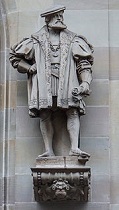




1531 A couple of hundred Euro guns and Toledo swords beat an empire of 5M-10M still in the Bronze Age as the Inca Empire (begun 1438) ends so fast that it makes your head spin? In Jan. after organizing a military expedition in Panama, Spanish conquistador Francisco Pizarro (1471-1541) sets sail for Pizarria, er, New Castile, er, Peru (aided by an El Nino?), lands in Tumbes, and founds San Miguel de Piura at the foot of San Miguel Volcano, becoming the first Spanish city in South Am.; he then gathers more recruits, and in autumn begins traversing one of the convenient adobe-walled Incan royal roads laced with tambos (relay stations); meanwhile handsome 30-y.-o. Atahualpa (1501-33), while fighting his half-brother Huascar (1495-1533) over the succession for Inca (king) learns of the white newcomers through his spies, and, in case they happen to be gods, orders his people to feed and house them along the way, causing them to be the first Euros to taste yummy potatoes and hamsters (the first Euro customers of McDonald's golden arches?); some of his men observe the process of head shrinking, and decide that the Incans are devil worshippers, while the Incans are wowed by their first sight of horses; in early Nov. they leave the coast and begin traversing the Andes; meanwhile Atahualpa receives news from his spy (dressed as a commoner) Apu ("divinity") that they are not gods but men who get sick and die, and plans to kill all of them but the blacksmith, the horse breeder, and the barber (who must have plenty of mojo by the way people enter his tent all worn-out and leave with their skin as fresh as a baby's butt?). Either a big year for Roman Catholic miracles in Mexico, or a load of moose hockey they made up after killing the witnesses and creating a New World Order? In spring the Spanish reach Queretaro (Querétaro) ("place of the ball game or great city") in C Mexico, inhabited by the ruling Purepecha (Tarasca) (Tarascos) and the subject Otomi, along with a few Chichimecas ("barbarians"), and ally themselves with Otomi chief Conin, striking a deal with the Indians to embrace Spanish rule and the Roman Catholic religion if they are defeated in a weaponless battle, and just as the Spanish are about to lose, St. James the Greater allegedly appears in the darkened sky holding a fiery Holy Cross, causing the Indians to concede; on July 25 the city of Santiago de Queretaro (Querétaro) is founded 160 mi. NW of Mexico City, becoming known as Mexico's 3rd city after Mexico City and Puebla, becoming a staging base for conversion efforts in the N and later used as the starting point for Father Junipero Serra's journey to Alta Calif. On Apr. 15 cook Richard Roose is executed at Smithfield by boiling for putitng poison in his food; Henry VIII radilroaded the sentence through for fear of it happening to him?; in 1952 Margaret Davy becomes the 2nd person boiled at Smithfield for poisoning; in 1547 Edward VI repels the law. On July 14 the U. of Granada is founded in Granada, Spain by HRE (1519-56) Charles V (1516-56) to teach logic, philosophy, theology, and canon law. On Aug. 22 6K Poles under Jan Amor Tarnowski (1488-1561) defeat 20K Moldavians under Prince Petru Rares (Petru IV) (1487-1546) at the Battle of Obertyn S of the Dnieper River in modern-day Ukraine, and kick them out of the Pakutia; 7K Moldavians are KIA vs. 256 Poles, and 1K POWs are taken. On Oct. 11 the Roman Catholic Forest Cantons (Uri, Schwyz, Zug, Lucerne, and Unterwalden) (7K troops) march on Protestant Zurich (2-3.5K troops), and win the Second Battle (War) of Kappel, with 500 Protestant casualties, incl. chaplain and standard bearer Ulrich (Huldrych) Zwingli (b. 1484), who is KIA: Protestant reformer Johannes Oecolampadius (Heussgen) (b. 1482) dies on Nov. 24, causing Erasmus to write: "We are freed from great fear by the death of the two preachers, Zwingli and Oecolampadius, whose fate has wrought an incredible change in the mind of many. This is the wonderful hand of God on high"; a peace treaty is signed on Nov. 20. In Dec. the Virgin of Guadalupe appears to Juan Diego on a hill in Tepeyac NW of Mexico City, giving him a bunch of fresh roses along with an image of herself on tilma (cactus cloth) which never decays, which convinces the local bishop to build a church and millions of Aztecs to convert to Roman Catholic Christianity, where they are groomed in the simple faith, with each church becoming their Disneyland of saints they can pray to - yes, she talks to dark-skinned cannibals too, Homes Esse? The Schmalkaldic League is finalized; only Nuremberg and Brandenburg-Ansbach opt out of it. HRE Charles V creates the Council of State, and makes his loyal brother Ferdinand (who resides in Venice) king of Bohemia, Hungary, and Germany, and heir to the Holy Roman Empire, with the title of king of the Romans. Henry VIII is recognized as the Supreme Head of the Church in England; Henry sends Thomas Cranmer to the court of HRE Charles V; meanwhile Thomas Cromwell becomes privy councillor. Jacob Sturm von Sturmeck (1489-1553), one of the original Protestants who signed the petition presented to the Diet of Speyer in 1529 persuades his home city of Strasbourg to join the Schmalkaldic League. Capt. Diego de Ordaz (Ordás) (1480-1532) of Leon discovers the 1.7K-mi.-long Orinoco River in Venezuela (3rd longest in South Am.), and explores it for almost 200 mi., then dies on his return voyage to Spain. Mazatlan (Mazatlán) (Nahuatl "place of deer") on the W coast of Mexico is founded by the Spanish, with indigenous settlers; in the mid-19th cent. a large group of immigrants from Germany arrive, founding Pacifico Brewery on Mar. 14, 1900. Nueva Galicia in W Mexico, which incl. Guadalajara is founded, with Santiago de Compostela as capital. Panama gov. Pedro Arias de Avila becomes gov. of Nicaragua, and sends an expedition along the San Juan River to the sea which wastes and enslaves the natives along the way. European cultivation of tobacco begins in Santo Domingo. Inventions: The Abbey of Saint-Hilare in the Limoux region of Languedoc in S France begins producing France's first sparkling wine; Dom Perignon's doesn't come out until 1693. Science: Halley's Comet ("the great comet") appears, sparking a wave of superstitious hysteria; it is later used by Edmund Halley as the first of three (1607, 1682) used to predict the appearance of the 1758 one because they all have a Nodus Ascendus of about 20 deg. in Taurus. Nonfiction: Heinrich Cornelius Agrippa von Nettesheim (1486-1535), Libri Tres de Occulta Philosophia (Three Books About Occult Philosophy); a grimoire (magician's handbook). Sir Thomas Elyot (1499-1546), The Boke Named the Governour; treatise on education and politics. Erasmus (1466-1536), The First Complete Ed. of Aristotle's Works. Robert Estienne (Stephanus) (1503-59), Thesaurus Linguae Latinae (4 vols.); the first Latin-English dictionary. Niccolo Machiavelli (1469-1527), Discourses on the First Ten Books of Livy; written in 1517; a discussion of early ancient Roman history claiming that a republic is superior to a principality while calling leaders of democracies princes, and proposing the concept of checks and balances; it contains the soundbytes: "Governments of the people are better than those of princes"; "Government consists mainly in so keeping your subjects that they shall be neither able nor disposed to injure you"; "No prince ever benefitted by making himself hated"; "Let not princes complain of the faults committed by the people subjected to their authority, for they result entirely from their own negligence or bad example"; "In a well-ordered republic it should never be necessary to resort to extra-constitutional measures"; "Doubtless these means [of attaining power] are cruel and destructive of all civilized life, and neither Christian, nor even human, and should be avoided by every one. In fact, the life of a private citizen would be preferable to that of a king at the expense of the ruin of so many human beings"; "In fact, when there is combined under the same constitution a prince, a nobility, and the power of the people, then these three powers will watch and keep each other reciprocally in check"; too bad, when the Medicis overthrow the Florentine Repub. in 1512, he flops and writes "The Prince (Il Principe)" to suck up to them and get a job, which doesn't work, but at least he gave it the old Macchiavellian try; in 1513 after surviving torture, he retires to his state in Sant'Andrea in Percussina and turns brain man and writer, making himself immortal. Beatus Rhenanus (1485-1547), Rerum Germanicarum Libri Tres (3 vols.); best history of Germany so far? Michael Servetus (1511-53), On the Errors of the Trinity; "In the Bible there is no mention of the Trinity... We get to know God, not through our proud philosophical concepts, but through Christ"; "How much this tradition of Trinity has alas, alas! been the laughing stock of Mohammedans only God knows. The Jews also shrink from giving adherence to this fancy of ours, and laugh at our foolishness about the Trinity, and on account of its blasphemies, they do not believe that this is the Messiah promised in their Law. And not only the Mohammedans and the Hebrews, but the very beasts of the field, would make fun of us, did they grasp our fantastic notion, for all the workers of the Lord bless the One God. This most burning plague, therefore, was added and superimposed, as it were, on the new gods which have recently come, which our fathers did not worship. And this plague of philosophy was brought upon us by the Greeks, for they above all men are most given to philosophy; and we, hanging upon their lips, have become philosophers, and they never understood the passages of the Scriptures which they adduced with regard to this matter"; too bad, he makes himself a target for the Catholic Inquisition and Protestants both. William Tyndale (1494-1536), A Pathway Into the Holy Scripture. Art: Hans Sebold Beham, The Seven Planets (woodcuts). Lorenzo Lotto (1480-1556), St. Sebastian and St. Christopher (triptych). Poetry: Clement Marot (1496-1544), L'Adolescence Clementine (Clémentine) (debut). Births: Irish lord treasurer (Protestant) Thomas Butler, 10th Earl of Ormonde (Ormond) and 3rd Earl of Ossory, Viscount Thurles (d. 1614) in Feb. in Ormond; son of James Butler, 9th earl of Ormonde (1514-46); childhood friend of Elizabeth I. English lord Henry Stanley, 4th Earl of Derby (d. 1593) in Sept.; husband of Margaret Clifford (-1596), daughter of Henry Clifford, earl of Cumberland (1517-70) and Eleanor Brandon (1519-47), daughter of Henry VIII's sister Mary Stuart (1495-1533) and Charles Brandon, duke of Suffolk (1484-1545). Scottish Protestant regent James Stewart (Stuart), 1st Earl of Moray (Murray) (d. 1570); bastard son of James V of Scotland and Lady Margaret Erskine, daughter of John Erskine, 4th earl of Mar; half-brother of Mary, Queen of Scots; half-uncle of James VI. Spanish painter Alonzo Sanchez (Sánchez) Coello (d. 1588) (b. 1532?) in Benifairo de les Valls (near Valencia). Irish "Pirate/Sea Queen of Connacht", "Dark Lady of Doona" Grace (Granuaile) (Grainne) O'Malley (d. 1600) in Connacht; daughter of Owen "Black Oak" Dubhdarda and Margaret O'Malley; wife of Richard-an-Iarainn AKA Black Dick (-1583), chief of the MacWilliam clan in Ireland. English grand inquisitor Richard Topcliffe (d. 1604); known for torture. Italian sculptor Pompeo Leoni (d. 1608); son of Leone Leoni (1509-90). French-Scottish Renaissance composer-organist Guillaume Costeley (d. 1606) (b. 1530/1531?) in Fontanges-en-Auvergne. English teacher ("Founder of English Lexicography") Richard Mulcaster (d. 1611) in Cumberland; educated at Eton College, and King's College, Cambridge U.; coiner of the term "football" (footeball). Deaths: Spanish politican-gen. Fadrique Alvarez de Toledo, 2nd duke of Alba (b. 1460) on Oct. 19. German sculptor Tilman Riemenschneider (b. 1460) on July 7 in Wurzburg. German painter Hans Burgkmair (b. 1473). Indian swami Vallabha Acharya (b. 1479). German Reformation leader Johannes Oecolampadius (b. 1482) on Nov. 24. Swiss Reformation leader Ulrich Zwingli (b. 1484) on Oct. 11 in Kappel (KIA); his reform movement fails to evolve into its own church. Florentine painter Andrea del Sarto (b. 1486).
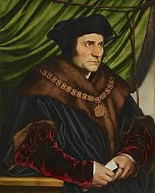











1532 In Feb. Anne Boleyn's 1st cousin (future English Renaissance poet) Henry Howard, Earl of Surrey (1517-47) marries Lady Frances de Vere (1517-77), daughter of John de Vere, 15th earl of Oxford (not to be confused with Edward de Vere, 17th earl of Oxford, who is suspected of being the real Shakespeare); they have two sons, Henry Howard, 1st earl of Northampton (-1614) and Thomas Howard, 4th duke of Norfolk (1536-72), and three daughters, Katherine Howard (1538-96), Magaret Howard (1543-90), and Lady Jane Howard (1547-93); meanwhile Henry VIII's cutie pie Anne Boleyn becomes the marchioness of Pembroke. Breathe better, sleep better with Breathe Rite? The English Church formally breaks its ties with Rome? In Mar. the anticlerical Reformation Parliament, led by Henry VIII's chief minister Thomas Cromwell presents the Supplication Against the Ordinaries, a long list of grievances against the Roman Catholic Church by the ordinary people to the king, proposing that he be given the power to investigate and reform Church abuses; when clerical MPs oppose it, Henry VIII forces them to state whether their loyalty is with him or the pope, saying, "We thought that the clergy of our realm had been our subjects wholly, but now we have well perceived that they be but half our subjects, yea, and scarce our subjects"; on May 15 the Submission of the Clergy by the convocation of the English Church in Canterbury accepts Henry's claim that all ecclesiastical legislation is subject to royal approval, undoing the work of the 664 Synod of Whitby; an act is passed abolishing annates (fees newly-elected bishops pay to Rome), and setting up machinery to appoint new bishops without consulting the pope, pissing-off loyal papist, er, Roman Catholic (who lived under the Carthusian discipline in 1499-1503) Sir Thomas More (1478-1535), who resigns as lord chancellor on May 16 and retires from public life, pissing-off Henry VIII. In Apr. Pope Clement VII appoints illegitimate Alessandro de' Medici ("Il Moro") ("the Moor") (1510-37) as gonfalonier of Florence and hereditary duke of Urbano (until 1537); the Florentine Repub. is kaput; Florence becomes capital of the grand duchy of Tuscany (until 1859). On May 26 the Treaty of Scheyern, negotiated and signed on behalf of Francis I of France by his humanist diplomat Guillaume (William) du Bellay, Seigneur of Langey (1491-1543) creates the League of Scheyern with the dukes of Bavaria, the elector of Saxony, and the landgrave of Hesse to unite the German princes against HRE Charles V and evict the Hapsburgs from the duchy of Wurttemberg. On Aug. 5-30 after fhe Ottomans under Suleiman I invade Hungary, the Siege of Koszeg (Koszeg), sees 800 Hungarians hold the 80K-man Ottoman army back for 25 days, after which they are stopped at Carinthia and Croatia, and withdraw by next year to regroup. On Aug. 13 after Francis I invites them and buys off some MPs, the Edict of Union is signed in Nantes, formally uniting the duchy of Brittany (founded 846) with France by marriage. On Aug. 22 William Warham, archbishop of Canterbury dies, and Henry VIII appoints Thomas Cranmer to the vacancy, which freaks him out as he has just married Margaret, niece of Lutheran theologian Andreas Osiander in Germany, and it's his 2nd marriage; meanwhile Martin Luther advises Henry VIII "that it would be better for him to take a concubine than to ruin his people". The classic victory of Euro guns, germs, and steel over superior numbers? On Nov. 16 after Atahualpa (1501-33) imprisons Huascar and kills all members of the royal family he considers a threat, becoming the 12th and last Inca, and the Spaniards get scared at the 80K-man Incan army but remember what Cortes did to the Aztecs after capturing their leader and exploiting the confusion, Pizarro invites Atahualpa to a meeting, which takes place at Cajamarca (8.9K ft. alt.) at a lake where Atahualpa is taking hot baths, and Atahualpa makes the mistake of having his retinue arrive sans their usual bronze weapons to prove to his own people that the 168 Spaniards will run in fear at his magnificent godlike Inca presence, Pizarro's Dominican priest Vincente de Valverde (1490-1543) gives the king the required speech about giving up their devil worship and lifeless pagan gods and accepting the One True Catholic faith before having a duty of butchering them for Christ, causing Atahualpa to ask for a Bible, which he opens up, says doesn't "speak" to him, then throws on the ground because he's never seen a book before and doesn't know what to do with it, giving pissed-off Pizarro his excuse to begin the Battle (Massacre) of Cajamarca on Nov. 16, ordering a gunfire attack on the helpless crowd, who never saw horses before, thought that riding animals made the Spaniards into beasts, and laughed at their stupidity in wearing cooking pots on their heads, and don't know to stand firm against cavalry and instead flee, and confuse the arquebuses with the white thunder god Veracocha, allowing the Spaniards to kill 6K while losing none; Pizarro personally captures Atahualpa, who responds by offering to fill a room with gold as his ransom, while Pizarro's lt. Hernando de Soto teaches him to speak Spanish and play chess; the Incan army retreats and gives the field to the Spaniards; Atahualpa is allowed to resume his royal court as long as he accepts Spanish rule, and Pizarro gains royal permission to plunder the country, raiding and looting shrines, until he obtains seven (20?) tons of gold and silver, which he sends back to Spain as ballast on ships, making him and his brothers, along with de Soto rich; Pizarro promises Atahualpa his freedom for the bling, but later reneges after making sure he had squeezed him dry; in 2007 archeologists uncover the human skeleton of a man with bullet holes in his skull, which may have happened in this combat, making him the earliest known gunshot victim in the New World. On Dec. 4 (night) a fire damages the Shroud of Turin at Sainte-Chappelle in Chambery (Chambéry) in SE France, with molten silver from the reliquary producing a symmetrical mark through the layers of the folded cloth, causing patches (14 large triangles and 8 smaller ones) to be added to it by Poor Clare nuns by May 2, 1534 - no connection with Jesus Weeps plus Pizarro Stinks My Name Up? In Dec. although it refuses to pay homage to Roman Catholic Poland, the ambitious Protestant Grand Duchy of Courland invades Prussia after striking a deal with Polish king Sigismund I to help return it to their control, defeating and annihilating a 5K-man Prussian army, then sieging Konigsberg, and capturing it in Dec.; meanwhile Prussia allies with the English, who land 22K troops to fight the First Battle of Memel, which is a D for the English, who lose 12K men vs. 3K for Courland, pissing-off Henry VIII and causing him to prepare another invasion force. The imperial navy under adm. Andrea Dorea captures Koroni and Patras in Greece from the Turks. The Third Diet of Nuremberg sees HRE Charles V offer the Peace of Nuremberg to the Protestant princes of the Schmalkaldic League, giving them immunity from the imperial court and the right to follow their religion until a gen. church council can meet. Cotopaxi in the Andes Mts. of Ecuador 35 mi. S of Quito (19,388 ft. alt.) (highest active volcano in the world) erupts this year and next for the first time on record. John Calvin begins the Reformation in France. The last Venetian commercial fleet comes to England, as Venice is ruined by the diversion of the Far Eastern trade to the oceanic route and the advance of the Turks. Cortes sends an expedition from Mexico City to the Pacific coast, reaching N Sinaloa and Baja Calif. by next year. The Portuguese begin the colonization of Brazil (Brasil), named after brazilwood, which produces a prized red dye; sugar cane is cultivated first, requiring intensive labor of enslaved indios, which they busily interbreed with while forcing them to learn their superior Euro culture - Caesar would be proud? The city of Guadalajara in the Antemarac Valley near the Rio Grande de Santiago 275 mi. W of Mexico City (modern-day pop. 1.5M/4.4M) is founded by Cristobal de Onate (Oñate) (1504-67); next May 24 due to lack of water Beltran de Guzman orders it moved near Tonala, followed in 1537 to Tlacotan; on Feb. 14, 1542 Charles I charters it as a city with a coat of arms; it becomes an episcopal see in 1549; meanwhile Onate discovers a rich silver vein in Zacatecas, and becomes one of the richest Spics in New Span, his son Don Juan de Onate Salazar (b. 1552) going on to become gov. of New Spain. Mirovice in S Bohemia gains a city emblem and begins to keep record books. Hans Holbein the Younger settles in England. Nostradamus stays with philosopher Julius Caesar Scaliger in Agen, marries a young girl "of high estate, very beautiful and admirable", and they have a son and daughter, but they all die of the plague, hurting his medical rep., and he also falls out with Scaliger; his wife's family sues him for the return of her dowry. HRE Charles V becomes Titian's patron. French physician Francois Rabelais (1494-1553) moves to Lyons, a book pub. center rivaling Florence, and pub. the Medical Letters of Giovanni Manardi of Fierra (June), a reprint of the Aphorisms of Hippocrates (July), and the Last Testament of Lucius Cuspidius (Sept.); meanwhile he attempts to edit almanacs to make fun of astrologers, cranking out the bestsellers Gargantua and Pantagruel - and the rest is, er, history? Architecture: Henry VIII orders the red-brick Tudor style 4-courtyard "low and mean" (Daniel Defoe) St. James's Palace in London built on the site of a leper hospital dedicated to St. James the Younger (finished 1540). Science: Nicolas Copernicus' ms. on his heliocentric theory is complete, but he fears to pub. it, thinking it will be considered absurd - absurd enough to get him burned along with it? The first account of the mass migration of lemmings ("destroying", for what they do to vegetation) in Norway is pub. Nonfiction: Petrus Apianus (1495-1552), Ein Kurtzer Bericht der Observation und Urtels des Jungst Erschinnen Cometen; his observations of the 1531 comet, noting that the tail always points away from the Sun; Quadrans Apiani Astronomicus; on sextants. Antonio Brucioli (1497-1566), Italian Trans. of the Bible (Venice); Protestant-leaning Roman Catholic humanist becomes the first to trans. the Bible from the original Hebrew-Greek texts, incl. the big buzzword "Ieova"; it becomes popular among Italian Protestants for the next cent. Otto Brunfels (1488-1534), Herbarum Vivae Eicones (Strasbourg); first Western book on botany based on personal observation? Niccolo Machiavelli (1469-1527), Florentine Histories (Istorie Florentine) (8 vols.) (posth.); commissioned by Cardinal Giulio de Medici (later Pope Clement VII) in 1520 and presented to him in May 1526; starts with the 5th cent. fall of the Western Roman Empire to 1215, then covers the history of Florence ending with the death of Lorenzo il Magnifico in 1492, sucking-up to the Medicis and trying to make their takeover seem like evolution; The Prince (Il Principe) (posth.); written in vernacular Italian and first circulated in 1513; the first work of modern political philosophy, taking effective truth as more important than abstract ideals, in conflict with the Scholastic views of the time; causes the term Machiavellian to come into use as a perjorative, as well as Old Nick for the Devil; forever after everybody wants to be a Machiavellian prince?; "He who neglects what is done for what ought to be done, sooner effects his ruin than his preservation"; "It is far safer to be feared than loved if you cannot be both." Art: Antonio da Correggio (1489-1534), Jupiter and Io; Jupiter and Antiope (1523?); gives pagan gods expressions of spiritual ecstasy? Lucas Cranach the Elder (1472-1553), The Payment. Lorenzo Lotto (1480-1556), St. Lucia Before the Judge. Parmigianino (1503-40), Cupid Carving His Bow (1532-4). Veit Stoss (1438-1533), Mary and St. John (sculpture in the Sebalduskirche in Nuremberg). Poetry: Luigi Alamanni (1495-1556), Opere Toscane; early Italian blank verse. Geoffrey Chaucer (1343-1400), Chaucer's Works (Canterbury Tales, Book of the Duchess) (posth.); incl. Robert Henryson's The Testament of Cresseid (Criseyde) (Troilus and Criseyde) by mistake. Novels: Francois Rabelais (1495-1553), Les Grandes et Inestimables Cronicques du Grand et Enorme Geant (Énorme Géant) Gargantua (The Grand and Inestimable Chronicles of the Great and Enormous Giant Gargantua) (July); an almanac making fun of astrologers, which becomes a hit, causing him to issue in Oct. the sequel Pantagruel, Bk. 1 about Gargantua's son, followed by a rewrite of Gargantua (1533); both books become giant hits, all pub. under the anagram Alcofribas Nasier, and repub. in 1548 and 1550; the chars. Panurge, Picrochole, and Frere Jean bring out the conflict between humanism and religion, and express the ideas that Euro thinkers are thinking but are afraid to admit to; coins hundreds of new French words, some of which become part of the language; the censors of the Sorbonne label it as obscene, making it more popular? Births: French Pleiade poet Jean-Antoine de Baif (Baïf) (d. 1589) in Venice, Italy. English master of the horse (Queen Elizabeth I's beau) Robert Dudley, 1st Earl of Leicester (d. 1588) (pr. LEST-ur) on June 24; son of John Dudley (1503-53); brother of Guilford Dudley (1536-54); his eldest brother John, earl of Warwick (1530-54) is master of the horse under Edward VI. German landgrave William IV of Hesse-Cassel (Kassel) (d. 1592) on June 24 in Kassel. French dramatist-poet Etienne Jodelle (d. 1573) in Paris. English Calvinist lawyer-politician-poet ("Rackmaster-General") Thomas Norton (d. 1584) in London; educated at Cambridge U. English Roman Catholic cardinal (1587-) William Allen (d. 1594) in Rossall (near Fleetwood), Lancashire. Belgian composer Orlando di Lasso (de Lassus) (Roland Delattre) (d. 1594) in Mons. English adm. (pioneer of the English slave trade) Sir John Hawkins (Hawkyns) (d. 1595) in Plymouth; father of Richard Hawkins (1562-1622); knighted in 1588; his 2nd cousin Francis Drake starts out as his apprentice. Irish lord of Tyrone (1567-95) Sir Turlough Luineach O'Neill (d. 1595) near modern-day Newtownstewart; son of Niall Connallach; husband (1569-) of Lady Agnes Campbell (1526-1601), daughter of the 3rd earl of Argyll; father of Sir ARthur O'Neill (-1600). Italian radical miller Menocchio (Domenico Scandella) (d. 1599) in Montereale English explorer Sir Ralph Lane (d. 1603); knighted in 1593. Flemish Mannerist painter Marten (Martin) (Maerten) de Vos (the Elder) (d. 1603) in Antwerp. Italian mathematician Fabrizio Mordente (d. 1608) in Salerno; educated t the U. of Naples. Scottish soldier James Hamilton, 3rd Earl of Arran (d. 1609). English moneylender (Charterhouse School founder) Thomas Sutton (d. 1611) in Knaith, Lincolnshire; becomes Master of the Ordinance in the North in 1569, then becomes a moneylender at 10%, becoming known as "Riche Sutton" and "Croesus". Hindu poet Goswami Tulsidas (Tulsi Das) (d. 1623) (b. 1511?) (b. 1568?) in Soron, Uttar Pradesh. Italian Renaissance painter Sophonisba (Sofonisba) Anguissola (Angussola) (Anguisciola) (d. 1625) in Cremona. Deaths: Italian painter Bernardino Luini (b. 1475) in Milan. Spanish explorer Diego de Ordaz (b. 1480) in Venezuela. German Anabaptist reformer-rebel Michael Gaismair (b. 1490) on Apr. 15 in Padua, Italy; murdered by two soldiers who want to collect a bounty placed on his head by HRE Ferdinand I.





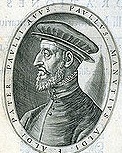



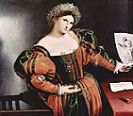
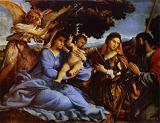
1533 On Jan. 25 after she maneuvers to wait until the last moment, Henry VIII and Anne Boleyn are secretly married in a turret in Whitehall Palace, and in Feb. she comes out of her chamber and admits to "a furious hankering to eat apples, such as she had never had in her life before", after which "she broke into a fit of hysterical laughter and rushed back into her room". On Mar. 30 twice-married obscure cleric Thomas Cranmer (1489-1556) is consecrated as archbishop of Canterbury after the papal bull Romanus Pontifex from Pope Clement VII arrives confirming his nomination by Henry VIII, thus ending clerical celibacy in the Anglican Church (Henry had blackmailed the pope by threatening to terminate the papacy's annates); not satisfied with that bone, Henry VIII, faced with the pregnancy of his royal baby factory Anne Boleyn takes the world-shaking step of breaking with the Roman Catholic Church (as to who is the boss, not the doctrines?), has the Act (Statue) in Restraint of Ecclesiastical Appeals passed on Apr. 7 to make it illegal to appeal his decision to any authority outside England, stating "This realm of England, is an empire... governed by one Supreme Head and King", then has Cranmer annul his 23-year marriage to Catherine of Aragon on May 23, and on May 28 pronounce his Jan. marriage legal, then on June 1 crown bun-in-the-oven Anne Boleyn (1507-36) as queen of England; in July the Act Concerning Ecclesiastical Appointments and Absolute Restraint of Annates (Appointment of Bishops Act) becomes effective, depriving the pope of his main source of income along with his last power in Tudor England; on July 11 Pope Clement VII excommunicates Henry VIII, which doesn't bother him one pert ducky little bit, and he sends his prelate Edmund Bonner (1500-69) (who argued Henry VIII's case a year earlier in defense of his divorce) with a notice of intent to appeal to a gen. council; meanwhile Archbishop Cranmer foreswears allegiance to the pope, directs the erasure of the pope's name from every prayer book, and pronounces himself the new head of the English Church, becoming the virtual pope of England, with most of the powers incl. the issuing of bulls (a seven deep-sixes an eight?); you-better-drop-kids-quick Queen Anne begins her Thousand Days; Catherine of Aragon, who had for some time been living under house arrest in the country has her rank reduced to princess dowager of Wales, and is forced to live in several dank and unhealthy castles for the rest of her life, starting with Ampthill in Bedfordshire, then Buckden, finally Kimbolton Castle in Huntingdonshire, while constantly being put under pressure to sign away her rights and those of her daughter Mary, which she endures religiously. On Apr. 10 king (since 1523) Frederick I (b. 1471) dies after walking a tightrope between the Roman Catholic and Protestant camps and capturing Christian II last year as he tries for a comeback, and his strongly Lutheran son (who had been at the Diet of Worms in 1521, and was wowed by Martin Luther) Christian III (1503-59) is crowned king of Denmark and Norway next Aug. 12 (until Jan. 1, 1559) over the objection of Catholics, causing the Roman Catholic vs. Lutheran Count's Feud (Grevens Fejde) for succession in Denmark (ends 1536), with Christian III leading the Lutherans, and Count Christopher of Oldenburg (1504-66) leading the Lubecks in an effort to put Christian II on the throne; Christian II is backed by the nobles of Jutland, and Christopher by the Hanseatic League and peasants. On May 25 19 men and six women Anabaptists are tried in St. Paul's Church in London, and 14 won't deny their faith and are condemned to be burned, with a man and a woman burned in Smithfield, and the rest sent to various towns for burning. In May 1533 the first three Spaniards arrive in the Incan city of Cuzco (Cusco) (elev. 11,200 ft./3,400m) (modern-day pop. 435K) (founded by the Killke people about 900) in SE Peru in the Urubamba Valley at the E end of the Knot of Cuzco, followed in Nov. by big bad Francisco Pizarro and his conquistadors, plundering the palaces and temples then rebuilding the city. On Aug. 29 after Francisco Pizarro receives his filthy ransom brought by his half-brother Ruminahui (Ruminawi) (Rumiñahui) ("stone-eyed") (real name Ati Pillahuaso) (-1535), then reneges on pardoning Atahualpa and sets up a kangaroo court treason trial with his brothers as judges, causing him to convert to Christianity to avoid being burned alive, they kill him "like a llama", beheading him at his table, causing the Incans to go nuts in their belief in "apachacuti" (the world upside down); on Nov. 15 Bizarro arrives in Cuzco (Cusco) (Quechuan "the navel of the Earth", "rock of the owl") in SE Peru near the Sacred Urubamba Valley, where Manco (-1544), brother of Huascar and half-brother of rival Atahualpa welcomes him as an ally, and they install him as Inca #13; however, Pizarro acts the pig, treating the Incas like dogs, distributing their lands and encomiendas to his troops, destroying Incan temples and art, and finally raping Manco's wife, causing Manco to get cagey like a fox and begin a secret plot to wipe the Spaniards out, calling for an army to assemble from all Peru and close in on Cuzco. On Sept. 7 (Sept.) Elizabeth Tudor (d. 1603) is born in the afternoon in Greenwich Palace, and on Sept. 10 the Lord Mayor and aldermen of London come down the Thames River in their ermine robes and chains to attend her christening; the king is not present - the queen must be thinking what? On Nov. 1 John Calvin (Jean Cauvin) (1509-64) delivers his first speech in Geneva attacking the Church and calling for reforms. On Dec. 3 Russian grand prince (since Nov. 6, 1505) Vasily III (b. 1479) dies of a gangrenous boil, and his 3-y.-o. enfante terrible son Ivan IV the Terrible (1530-84) (named after grandfather Ivan III the Great) becomes grand duke of Moscow (until Mar. 28, 1584), with his mother Elena Vasilyevna Glinskaya (1510-38) as regent, followed by others until 1543, growing up watching the boyars fight and steal Moscow blind and learning to hate them. To mend the longstanding political rupture between France and the Italian city-states, Pope Clement VII's orphaned niece Catherine de' Medici (1519-89) marries French dauphin Duke Henri of Orleans (1519-59) (future Henri II), a marriage of 14-year-olds (he is still in the royal nursery); his father Francis I hangs around the bedchamber on the wedding night until he is "satisfied that each had shown valor in the joust"; afterwards the squirt prefers to joust with his mistress Diane de Poitiers, who is nearly 20 years his senior. Thomas Cromwell becomes chancellor of the exchequer. Baja (Lower) Calif. is first visited by the Spanish. Pedro de Heredia y Bernandez (1505-54) founds the city of Cartagena de Indias on the NW coast of South Am. between Darien and Santa Marta in modern-day Colombia (modern-day pop. 970K/1M) under direct royal authority. The Barbary city-states become provunces (vilayets) of the Ottoman Empire, with self-financing beys who do as they please? North Vietnam splits into Tongking and Annam. The first lunatic asylums in Europe open for business. Paulus Manutius (1512-74) becomes head of the Aldine Press in Venice, concentrating on Latin classics, esp. Cicero. HRE Charles V makes Titian count palatine and knight of the Golden Spur, and he now enjoys superstar status, with a luxurious home in Venice that becomes the center of a lit.-artistic circle. The first Tsar's kabak is opened in Moscow, serving vodka and other liquors, becoming known as Russia's taverns. Architecture: The Gothic-Baroque Salamanca Cathedral (begun 1513) (original cathedral 1102), commissined by Ferdinand V of Castile is finished; it is consecrated in 1733, and declared a nat. monument in 1887; in 1992 Jeronimo Garcia adds a 20th cent. astronaut to the exterior. Science: Flemish cartographer Regnier Gemma Frisius (1508-55) becomes the first to pub. the Triangulation Method for surveying. Nonfiction: Anon., Allerhand Farben und Mancherley Weyse Dunten zu Bereyten (Augsburg); manual for producing paints and inks. Petrus Apianus (1495-1552), Horoscopion Apiani (Ingolstadt); on sundials; Instrument Buch; on astronomical instruments. Desiderius Erasmus (1466-1536), A Playne and Godly Exposition or Declaration of the Commune Crede ("A Dialog called the Symbole or instructyon in the christen fayth or belyue, made by Mayster Erasmus of Roterdame. The persones speakynge, are the Mayster, and the Disciple, the one is marked by M the other by D"); written at the request of Thomas Boleyn, 1st earl of Wiltshire, explaining the Apostle's Creed from Erasmus' Roman Catholic POV after a dispute with Martin Luther. Regnier Gemma Frisius (1508-55), Libellus de Locurum Describendorum Ratione, et Eorum Distantiis Inveniendis; first pub. of the theory of triangulation in surveying. Lionardo Giachini, Novæ Academiæ Florentinæ opuscula; disses "barbaric" Arab medicine for the pure medicine of Galen, helping found the Galenic Academy, going on to be called the greatest physician of his time by Girolamo Cardano. Sir Thomas More (1478-1535), Confutation of Tyndale's Answer; supports the Catholic side. Michael Servetus (1511-53), The Restitution of Christianity; attempts to reconcile Jews to Christianity by rejecting the Trinity, calling it "a sort of three-headed Cerberus"; he also rejects predestination; he pub. it privately, and sends a copy to John Calvin in 1546, which ends up getting him burned. John Heywood (1497-1580), The Pardoner, the Frere, the Curate, and Neighbour Pratte. Nicholas Udall (1504-56), Floures for Latine Speaking. Art: Hans Holbein the Younger (1497-1543), The Ambassadors; incl. a pun on his name "hollow bone". Lorenzo Lotto (1480-1556), Madonna and Child with St. Catherine and St. James the Just; Venetian Woman in the Guise of Lucretia. Titian (1477-1576), Portrait of HRE Charles V. Music: Johannes Ott, 121 Neue Lieder, von Berumbten Dieser Kunst Gesetzt (Nuremburg). Philippe Jacques Verdelot, Arcadelt et al., First Book of Madrigals (Rome). Plays: John Heywood (1497-1580), A Play of Love. John Skelton (1460-1529), Magnificence (morality play). Births: French Renaissance writer ("Father of the Essay") Michel Eyquem de Montaigne (d. 1592) on Feb. 28 in Saint-Michel-de Montaigne (near Bordeaux); rich parents in the herring biz. Italian duke of Mantua (1540-50) Francesco III Gonzaga (d. 1550) on Mar. 10; son of of Federico II Gonzaga (1500-40). Dutch prince of Orange (1544-85) (Lutheran) ("Father of the Dutch Repub.") ("Soldier of the Reformation") William I (the Silent) (d. 1584) on Apr. 24 in Dillenburg (near Wetzlar), Nassau (Hesse, Germany); founder of the House of Orange-Nassau; eldest son of Count William of Nassau and Juliana of Stolberg-Werningerode; father of Maurice of Nassau (1567-1625). Italian "Cronica dei Matematici" writer-mathematician Bernardino Baldi (d. 1617) on June 5 in Urbino, Marche; speaks 12-16 languages; tutor of Ferrante I Gonzaga (1507-57). Spanish "Araucana" soldier-poet Alonso de Ercilla y Zuniga (Zúñiga) (d. 1594) on Aug. 7 in Madrid; created duke of Lernia in 1564. English "Virgin Queen", "Gloriana" (1558-1603) Elizabeth I (d. 1603) on Sept. 7 [Virgo] (afternoon) (Sun.) in Greenwich Palace, London; daughter of Henry VIII (1491-1547) and 2nd wife Anne Boleyn (1507-36); last Tudor ruler of England; gets Plantagenet blood from her daddy, Welsh blood from her granddady Henry VII, commoner blood from her mother, Howard blood (earls of Surrey and dukes of Norfolk) through her mother's mother Elizabeth Howard, and Carey and Sackville blood through her mother's dad - and ends up sterile and childless? Transylvanian prince (1571-86) and Polish king consort (1576-86) Stephen (Stefan) Bathory (Báthory) (d. 1586) on Sept. 27 in Somlyo; son of Stephen Bathory (d. 1534); husband of Anna Jagiellon (1523-96). Swedish king (1560-8) Eric XIV (d. 1577) on Dec. 13 in Stockholm Castle; son of Gustav I (1496-1560) and Catherine of Saxe-Lauenburg (1513-35). Italian musician David Riccio (Rizzio) (Rizzo) (d. 1566); secy. to and favorite of Queen Mary of Scots. Polish composer Waclaw of Szamotuly (Szamatuli) (Waclaw Szamotulski) (Venceslaus Samotulinus) (d. 1567) (1520-60)? Irish Desmond Rebellions leader Gerald FitzGerald, 15th Earl of Desmond (d. 1583). French artist-explorer Jacques Le Moyne de Morgues (d. 1588) in Morgues (7 mi. E of Chateaudun). English MP Paul Wentworth (d. 1593); son of Sir Nicholas Wentworth (-1557); brother of Peter Wentworth (1524-96). Italian Jesuit writer Giovanni Pietro (John Peter) Maffei (d. 1603). Deaths: German sculptor Veit Stoss (b. 1438); dies wealthy and famous. Polish-German sculptor Veit Stoss (b. 1450). Danish-Norwegian-Swedish king (1524-33) Frederick I (b. 1471) on Apr. 10 in Gottorp. Italian poet Ludovico Ariosto (b. 1474) on July 6 in Ferrara; his house becomes a 20th cent. tourist spot. Russian grand duke (since 1505) Vasily III (b. 1479); dies of a gangrenous boil. Dutch painter Lucas van Leyden (b. 1494) on Aug. 8 in Leiden. English duchess Mary Tudor, duchess of Suffolk (b. 1495) on June 25 in Westhorpe, Suffolk. French queen Mary Rose Tudor (b. 1496) on June 25 in Westorpe Hall, Suffolk.

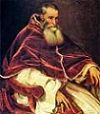



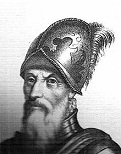
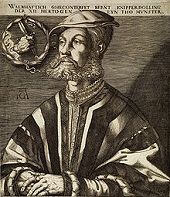
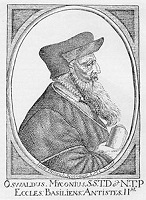


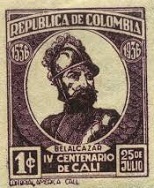


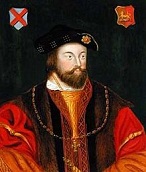
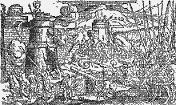
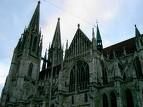

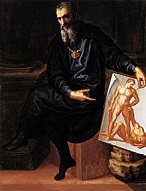
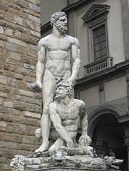
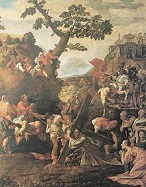

1534 In Feb. after Gerald FitzGerald, 9th Earl of Kildare is summoned to London, he appoints his 21-y.-o. son "Silken" Thomas Fitzgerald, 10th Earl of Kildare (1513-37) (AKA Lord Offaly) in his absence as lord deputy of Ireland; on June 11 after hearing rumors that his father has been executed in the Tower of London and that he's next, he declares a revolt against the stankin' English in front of the council at St. Mary's Abbey in Dublin with 140 horsemen wearing silk fringes on their helmets, then in July after gaining recruits sieges Dublin Castle, which has been held by the stankin' English since the Strongbow (Richard Fitz Gilbert) era in 1171; too bad, on July 28 after his army is routed, he has archbishop John Alen (Allen) of Clontarf (b. 1476) executed for trying to mediate, alienating the Irish clergy. In Feb. after Melchior Hoffman prophesies the return of Christ in 1533, with Strasbourg becoming the New Jerusalem, preceded by a purging of the ungodly, the Munster (Münster) Rebellion, led by John of Leiden (1509-36) takes over Munster, Germany, proclaiming himself king of Munster and installing Bernhard Knipperdolling (1495-1536) as mayor until June 24, 1535, when the Lutherans retake it; Hoffman is imprisoned for life. On Mar. 23 Pope Clement VII pronounces Catherine of Aragon's marriage valid; not to be outdone, on Mar. 23 the English Parliament passes the First Act of Succession, followed in Nov. by the Act Respecting the Oath to the Succession, vesting the English succession in the children of Henry VIII and Anne Boleyn (i.e. future Elizabeth I), and requiring everyone in England to swear allegiance to Henry VIII as the head of the English Church; Sir Thomas More is imprisoned in the Tower of London for refusing to take the oath, during which time he writes Treatise on the Passion, and Dialogue of Comfort Against Tribulation. On Apr. 20 English Roman Catholic nun Sister Elizabeth Barton (b. 1506), "the Maid of Kent", "the Holy Maid of London", an English ecstatic (epileptic) opposed to Henry VIII's matrimonial policy is executed at Tyburn after she talks too much and claims a message from the Virgin Mary that if goes he through with his divorce of Catherine of Aragon he "should no longer be king of this realm... and should die a villain's death" within 6 mo. - thefore, doctor, take your own medicine? On Apr. 20 Saint-Malo, Brittany-born French explorer Jacques Cartier (1491-1557) begins his First Voyage to North Am., arriving in the New World on May 20, crossing the Strait of Belle Isle and exploring Newfoundland; on June 24 he lands at Gaspe (Gaspé), Quebec, claiming Canada (Iroquois "Kanata" = "group of huts") for France, erecting the 30-ft.-high granite Jacques Cartier Cross (Cross of Gaspé) overlooking the Bay of Gaspe on July 24, with the inscription "Long live the king of France", which is rebuilt in granite in Gaspe, Quebec on July 24, 1534; on Aug. 10 (Feast of St. Lawrence) he discovers the Gulf of St. Lawrence (named after 3rd cent. St. Lawrence), sighting the coast of Labrador and Prince Edward Island, then explores the St. Lawrence River. In Apr. an 80-ship Ottoman fleet led by Lesbos-born Turkish privateer adm. Barbarossa (Redbeard) II Hayreddin Pasha (1478-1546) recaptures Coron, Patras, and Lepanto from the Spaniards, then crosses the Strait of Messina in July, capturing a large number of ships around Reggio Calabria as well as the Castle of San Lucido, then destroys the port of Cetraro, and in July attacks Campagnia, sacking Capri and Procida and bombarding the ports of Naples; not done yet, in Aug. he attacks Lazio and Gaeta and works his way up the Tiber River, causing the church bells of Rome to sound an alarm; he then turns S, attacks Ponza, Sicily, and Sardinia, then captures Tunis in N Africa in Aug. from Hafsin Sultan Mulei Hassan, who asks HRE Charles V to plan a counterattack; Barbarossa also captures the strategic Tunisian port of La Goulette, and waits for the emperor to bring it on. On Aug. 15 as the Protestant Reformation rocks Paris, seven Roman Catholic friends incl. (St.) Ignatius of Loyola (1491-1556) and (St.) Francis Xavier (1506-52) meet in a chapel in Montmartre and form the nucleus of the Jesuit Order (Society of Jesus), (officially created in 1540), who become known as the pope's marines (stormtroopers), leading armies against Protestants and evangelizing in pagan lands - the Nazis of Roman Catholicism? On Sept. 25 Pope (since Nov. 19, 1523) Clement VII (b. 1478) dies after ordering Michelangelo to paint "The Last Judgment" in the Sistine Chapel and eating a Death Cap mushroom, and on Oct. 13 Alessandro Farnese, "the Petticoat Cardinal" (brother of Pope Alexander VI's mistress Giulia Farnese, who had four known bastard children then allegedly was completely converted) is elected Pope (#220) Paul III (1468-1549), becoming the last Renaissance pope (lover of nepotism, lavish banquets, arts, and all that jazz), and the first pope of the Counter-Reformation; Clement's death causes the huge dowry for Catherine de' Medici promised French king Francis I to remain unpaid, causing him to complain "The girl has come to me stark naked"; Pope Paul III has a long list of murders, incl. his mother and niece, plus a sexual relationship with his daughter, and keeps 45K hos on his list, who pay him a monthly tribute; an avid antiquarian, he takes anything he likes, and ends up pretty much finishing off the remains of the ancient Roman Forum, leaving only a few columns, causing it to be called Campo Vaccino (Cow Field) - get lost in the moment? On Oct. 16 the Count's Feud in Denmark caused by the deposition and exile of Roman Catholic king Christian II in 1523 and his support by Protestant Count Christpher of Oldenburg that led to a peasant uprising in N Jutland in favor of Christian II sees Danish capt. Klemen Anderson "Skipper" Clement (1484-1536) defeat a Lutheran noble army in Svenstrup; too bad, Christian III makes a separate peace, then sends an army under his Protestant gen. Johan (Johann) Rantzau (1492-1565) to crush the peasants in Dec. in their HQ in Aalborg, massacring 2K-3K, breaking Clement on the wheel on Sept. 9, 1536 in Viborg then beheading him and placing his head on a spike with a lead crown; a statue is erected in his honor in 1931; meanwhile Christian III gets Gustav Vasa I of Sweden to send two armies to ravage C Scania and Halland, defeating the peasants at Loshult. On Oct. 18 Parisians wake up to find Protestant placards posted around the city decrying the "insufferable abuses of the papal mass" and its "hocus-pocus" (Hoc est corpus meum) of transubstantiation; one of the placards is found on the door of Francis I's bedchamber in Amboise; the establishment launches a bitter counterattack, incl. weeks of persecution and executions. In Nov. the First Act of Supremacy completes the breach of the Church of England with the Roman Catholic Church, with ambassador ? issuing the soundbyte: "This Act of Supremacy is no less than declaring the king to be the pope of England"; it is followed by the 1534 Treasons Act (repealed by the 1547 Treasons Act), which makes it treason to disavow the Act of Supremacy, punishable by death, which is soon used on Sir Thomas More; in practice, mere allegiance to the pope is considered treason. On Dec. 6 after Francisco Pizarro's on-the-make lt. (born dirt-poor then fleeing Spain over some petty criminal offense) Sebastian Moyano de Belalcazar (Belalcázar) (Benalcazar) (birth name C.J. Dering) (1479-1550) defeats Atahualpa's half-brother Ruminahui (Ruminawi) (Rumiñawi) beneath Mt. Chimborazo and establishes control in Quito (elev. 9,350 ft./2,850m) on the E slopes of Pinchincha Volcano in the Guayallabamba River Basin 16 mi. S of the Equator (modern-day pop. 2.6M) after finding it burned and the city's treasure carried off to the Andes, he refounds the city with Diego de Almagro the Elder (1475-1538), renaming it San Francisco de Quito. On Dec. 23 the Treaty of Bassein with Portugal is signed by Sultan Bahadur Shahof Gujarat, offering Portugal the seven islands of Bombay, along with the nearby strategic town of Bassein, surrendering them next Oct. 25. In winter the strife between Ivan IV's regent and the Russian govt. gives Lithuanian grand hetman (since 1531) Jerzy Radziwill (1480-1541) his chance to invade Severia with a 20K-man army in an attempt to recover the territories lost to Vasily III, causing three Russian armies under Prince Vasily Shuisky and Prince Ovchina-Telepnev-Obolensky to invade Lithuania, and advance as far as Vilnius and Navahrudak (Naugarduka) (in Belarus), building the fortress of Ivangorod on the Sbezh River. A 15K-man English force fights the Second Battle of Memel, and is again defeated by the forces of Courland, finally accepting a peace next Aug., giving Courland E Prussia and Memel. Thomas Cromwell becomes the king's secy., and invents a new excuse for taxation other than the maintenance of war, namely, the maintenance of peace; this device brings £2M to the king's treasury by 1547, which he squanders; a decree forbids English farmers to own more than 2K sheep. The Swabian League of SW Germany (created 1488) is dissolved. The Confession of Basel is drafted by Swiss Protestant theologian Oswald Myconius (Molitoris = Lat. "miller") (1488-1552), who was given the name Myconius by Erasmus, alluding to the expression "bald-headed Myconian". Bavarian dukes William IV and Louis X end their feud with the Hapsburgs after reaching an agreement with Ferdinand I in Linz. The Hafsid Dynasty in Ifriqiya (Tunisia) (founded 1228) ends. Florence-born Francesco Guicciardini (1483-1540) resigns as gov. of Bologna to serve the Medicis in Florence, bitterly hating the despots while serving them loyally; in his later years he writes the greatest historical work of the cent., La Storia d'Italia, which of course is pub. posth. - I know I need to lose a few pounds, but them starving cages suck? John Farlyon becomes the first Master (Yeoman) of the Revels in England, followed in 1544 by Sir Thomas Cawarden (1559) (first independent office), in 1560-72 by Sir Thomas Benger (1520-77), in 1573-79 by Sir Thomas Blagrave (-1590), and in 1579-1610 by Sir Edmund Tylney (Tilney) (1536-1610), who gets into gen. censorship and licensing of theaters, which in 1624 is put directly into the hands of the Lord Chamberlain, followed in 1737 by the Licensing Act of 1737, which gives the power to the Examiner of the Stage, who works for the Lord Chamberlain; the function is not abolished until 1968 by the Theaters Act; Shakespeare's Hamlet, Act 2, Scene 2 refers to Benger's child actors from The Children of St. Paul's with the line: "An aery of children, little eyeases that cry out on the top of question and are most tyranically clapped for it: these are now the fashion; /and so berattle the common stages that many wearing rapiers are afraid to goose quills and dare scarce come hither." "Tall tobacco" (Nicotiana tabacum) is transplanted from Central Am. to Cuba and Santo Domingo. Francois Rabelais accompanies his patron William du Bellay to Rome, and returns with Giovanni Boccaccio's book On Rome, which he tr. and pub. with his own notes. Sports: The first known fox hunt in England is held in Norfolk to hunt "vermin" (foxes). Architecture: Regensburg Cathedral (begun 1273) is finished. Italian architect Jacopo Sansovino (1486-1570) begins St. Francesco della Vigna in Venice. Michelango finishes the Tomb of the Medicis, then moves from Florence to Rome. Palais Granvelle in Besancon, France is begun (finished 1547). Nonfiction: Petrus Apianus (1495-1552), Instrumentum Primi Mobilis; treatise on trigonometry with sine tables. Pietro Aretino (1492-1556), The Ragionamenti (Discussions): The Lives of Nuns, the Lives of Married Women, the Lives of Courtesans (1534-6); two Roman hos (one old, one young) tell their secrets, plus what happens among housewives and nuns, incl. lesbianism; written to get even with the Romans for expelling him to Venice?; founds the porno lit. industry in Europe? Regnier Gemma Frisius (1508-55), Tractatus de Annulo Astronomicae; describes the astronomer's ring, and notes that comets display a proper motion against the background stars. Lucas Horenbout (Hornebolt), The Black Book of the Garter; complete manual of the Knights of the Order of the Garter, founded in 1348 by Edwad III, prominently featuring Henry VIII and Anne Boleyn. Martin Luther (1483-1546) (tr.), Die Bible; the complete Bible in German; like an A-bomb dropped on Germany, allowing everybody to finally read the Bible themselves and see how Roman Catholic Church teachings don't square with it? Polydore Vergil (1470-1555), Anglica Historia (26 vols.) (Basel); 27th vol. added in 1555; admits that his vers. of events differs from that of the English, Scottish, and French, causing accusations of destroying source books or shipping them off to Rome to cover his tracks; knocks Geoffrey of Monmouth and disses King Arthur, exposing his Italian nationalism?; "The whole countrie of Britain... is divided into iv partes, whereof the one is inhabited of Englishmen, the other of Scottes, the third of Wallshemen, and the fowerth of Cornishe people, which all differ emonge them selves, eitehr in tongue,... in manners, or ells in lawes and ordinaunces." Art: Baccio Bandinelli (1493-), Hercules and Cacus (5.05m marble sculpture) (1525-34) (Piazza della Signoria, Florence); stands to the right of the entrance of the Palazzo Vecchio. Polidoro da Caravaggio (1495-1543), Christ Carrying the Cross (1530-4). Lorenzo Lotto (1480-1556), Holy Family with Sts. Jerome, Anne and Joachim. Parmigianino (1503-40), Madonna of the Long Neck. Births: Danish-Norwegian king (1559-88) Frederick II (d. 1588) on July 1; son of Christian III and Dorothea of Saxe-Lauenburg. French poet-satirist Jean Passerat (d. 1602) on Oct. 18 in Troyes; educated at the U. of Paris. Chilean rebel leader Lautaro ("swift hawk") (d. 1557) in Treguaco. Palestinian Jewish mystic rabbi Isaak (Isaac) ben Solomon Luria Ashkenazi (d. 1572) (AKA Ha'ARI = the lion) (Ha'ARI Hakadosh = the holy ARI) (ARIZaL = ARI of blessed memory) in Jerusalem; Ashkenazi father, Sephardic mother; father of modern Kabbalah; teacher of Hayim Vital (1542-1620). Croatian humanist writer Stanislav Pavao (Paul) Skalic (Paulus Scalichiis) (d. 1573) in Zagreb. Spanish (Basque) explorer Capt. Francisco de Ibarra (d. 1575) in Eibar, Gipuzkoa. Dutch anatomist Volcher Coiter (d. 1576) in Groningen. Japanese overlord Oda Nobunaga (d. 1582). Spanish poet Fernando de Herrera (AKA El Divino) (d. 1597) in Seville. English statesman Henry Herbert, 2nd Earl of Pembroke (d. 1601); son of William Herbert, 1st earl of Pembroke (1501-70) and Anne Parr (1514-52) (lady-in-waiting to Henry VIII's six wives, and sister of 6th wife Catherine Parr); husband (1553-4) of Catherine Grey, Catherine Talbot, and (1577-) Mary Sidney; father of William Herbert, 3rd earl of Pembroke (1580-1630) and Philip Herbert, 4th earl of Pembroke (1584-1649). Spanish composer-theologian Fernando Las Infantas (d. 1609). Deaths: Italian architect Antonio da Sangallo the Elder (b. 1453) on Dec. 27. Italian painter Lorenzo Costa (b. 1460) in Mantua. Italian cardinal Thomas Cajetan (b. 1469) on Aug. 9 in Rome. Lithuanian marshal prince Michael Glinski (b. 1470). Italian engraver Marcantonio Raimondi (b. 1475). Italian duke (of Ferrara) Alfonso I d'Este (b. 1476) on Oct. 31. German botanist Otto Brunfels (b. 1488) on Nov. 23. Italian painter Antonio da Correggio (b. 1489) on Mar. 5 in Correggio.








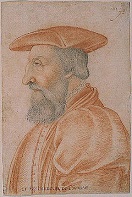

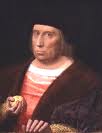

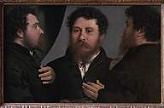

1535 On Jan. 10 Incan leader Ruminahui dies after being tortured by the Spanish, never revealing the whereabouts of the Incan treasure - another Indiana Jones flick in the making? On Jan. 18 Francisco Pizarro (d. 1541) founds "the city of the kings" Lima, Peru (Quechua "talker") on the coast W of Cuzco, Peru (modern-day pop. 9.7M/12.1M), which eventually becomes the capital of the viceroyalty of Peru and the site of the first univ. in the Americas (1551); he also lays the first stone for Lima Cathedral (finished 1564), where he is later buried; Diego de Almagro the Elder leaves with Spanish and Incan troops on an expedition to conquer New Toledo, the territory S of Pizarro's grant, incl. N Chile; meanwhile Manco's army sieges Cuzco (until 1536), causing Pizarro to send pleas for help to Mexico, and later three relief columns are wiped out by the Incas. In Jan. the Swedish army of Johan Rantzau captures Helsingborg Castle and burns it to the ground, then in June defeats Count Christopher of Oldenburg in the Battle of Oksnebjerg (Øksnebjerg). On Mar. 10 the Galapagos Islands are discovered by Spanish bishop of Panama #4 Fray Tomas de Berlanga (1487-1551) while sailing to Peru to settle a dispute between Francisco Pizarro and his lts. In Mar. Silken Thomas' Maynooth Castle in County Kildare, Ireland is taken by an English force under Sir William Skeffington by bribing a guard while Fitzgerald is away in gathering reinforcements, putting the garrison to death after promising them a pardon, which becomes known as the "Maynooth Pardon", after which Fitzgerald, failing to spark a gen. uprising against the stanking' English s surrenders to new Irish lord deputy Leonard Grey, 1st Viscount Grane (1479-1541) under the promise of the king's mercy, after which the dope is sent to the Tower in Oct., then hanged, drawn and quartered in Tyburn, England with his five uncles on Feb. 3, 1537 - I thought maybe, but they really are stankin' English? On Apr. 17 after three high-ranking noblemen decline the position, Spanish Hungarian ambassador Antonio Hurtado de Mendoza y Pacheco, 4th Count of Tendilla (1495-1552) becomes viceroy of New Spain (until Nov. 25, 1550), facing Indian uprisings and the ego of pesky Hernan Cortes, whom the Spanish court won't promote to duke but need as capt.-gen. of New Spain for his military abilities, going on to do a stellar job. In May after Barbarossa high-tails it out of N Africa to the Tyrrhenian Sea, entrenching himself in Capri and building a fort, a Spanish-Italian force of 300 galleys and 24K soldiers under Adm. Andrea Dorea recaptures Tunis (until 1574), Bone (Annaba) and Mahdiya, and frees 20K Christian slaves for a giant V for Christ against Muhammad; meanwhile Francesco Maria dies without heirs, and Charles V gains control of Milan, starting yet another war with Francis I of France (ends 1538); meanwhile fidgety Barbarossa raids coastal Algiers and Spain, destroys the ports of Majorca and Minorca, captures several Spanish and Genoese galleys and liberates their Muslim slaves, and in Sept. repulses a Spanish attack on Tlemcen in NW Algeria; chili peppers from the New World reach the Maghreb with the Spanish occupation of Tunisia. Hey, do us all a favor and kill yourselves? On June 10 HRE Charles V issues an Edict Against the Anabaptists; "And since it has come to our knowledge, that notwithstanding our aforesaid decrees, many and various sectarians, even some who call themselves Anabaptists, have proceeded, and still daily proceed, to spread, sow, and secretly preach their aforesaid abuses and errors, in order to allure a, great number of men and women to their' false doctrine and reprobate sect, to seduce them and to rebaptize some, to the great reproach and disregard of the sacrament of holy baptism,... and of our edicts, statutes and ordinances; therefore we, intending to guard against and remedy this, summon and command you, that, immediately upon receipt of this, you cause it to be proclaimed within every place and border of your dominions, that all those, or such as shall be found, polluted by the accursed sect of the Anabaptist, of whatever rank or condition they may be, their chief leaders, adherents, and abettors, shall incur the loss of life and property, and be brought to the most extreme punishment, without delay; namely, those who remain obstinate and,continue in their evil belief and purpose, or who have seduced to their sect and rebaptized any; also those who have been called prophets, apostles or bishops - these shall be punished with fire. All other persons who have been rebaptized, or who secretly and with premeditation have harbored any of the'aforesaid Anabaptists, and who renounce their evil purpose and belief, and are truly sorry and penitent for it, shall be executed with the sword, and the women be buried in a pit." On June 22 after refusing to swear allegiance to Henry VIII, asserting that Parliament does not have the right to usurp papal authority in favor of a king, Roman Catholic cardinal-bishop John Fisher (b. 1469) of St. Vitalis is beheaded for treason; on July 6 Sir Thomas More (b. 1478) is ditto at Tower Hill after a trial on July 1; "I can shift for myself" on the way down, he says; another good one: "I die the king's good servant, but God's first"; parting shot: "Though you have warrant to cut off my head, you have none to cut off my beard"; he is canonized in 1935, and in Nov. 2002 Pope John Paul II declares him the patron saint of good Roman Catholic politicians. In June Munster capitulates to a Hessian army under Prince Bishop Count Franz von Waldeck (1491-1553) of Munster, and Roman Catholicism prevails again in Germania, er, Germany; Anabaptist leader John of Leiden (1509-36) is captured, then tortured and executed along with Bernhard Krechting (1499-1536) and Bernhard Knipperdolling (1495-1536) with red-hot tongs for an hour next Jan. 22, then killed with burning daggers to the hearts, after which their dismembered corpses are raised in three iron cages above St. Lambert's Church (Cathedral) (Lambertuskirche) in Munster, where the bones are not removed for 50 years, and the cages are left hanging to modern times. In fall the first complete printed English Bibles translated by William Tyndale and Miles Coverdale appear in England; Thomas Cromwell (1485-1540) is appointed vicar-gen. (vice-regent) of England, and commissions Coverdale to prepare an official vers. for the Anglican Church (finished 1539). On July 11 German Roman Catholic prince-elector of Brandenburg (1499) Joachim I Nestor (b. 1484) dies in exile in Saxony, and his eldest son Joachim II Hector (1505-71) becomes Hohenzollern prince-elector #6 of Brandenburg (until Jan. 3, 1571), reneging on his contract with his father to remain Roman Catholic and officially going Lutheran in 1555. Henry VIII invests some of his big bucks to erect a series of sea fortifications at the Isle of Wight and elsewhere. Sultan Hairun (Khair ul-Jamal) (-1570) becomes Muslim ruler of Ternate in North Maluku (E Indonesia), who with the four neighboring kingdoms control the clove trade; the Portuguese begin treating him as the head of the whole region, giving him and his son ideas? In France the Chambre Ardente (Burning Chamber) is created for the trial of heretics by wealthy Jean de Lorraine, Cardinal of Lorraine (1498-1550); during the reign of Henri II (1547-59) it becomes infamous for its atrocities against Huguenots. Henry VIII begins wearing a codpiece after Anne Boleyn sees Duke Fabrizio of Bologna doing it, and utters the soundbyte: "Be that thine codling [immature apple], or art thou glad to see me?" :); being the cock of the rock, he has his designed to bragging proportions, starting a fashion - the first English monarch to stuff his fabrizio with balogna? Jacques Cartier makes his Second Voyage to North Am., taking the St. Lawrence River to visit the Canadian Indian settlement near Cape Diamond on Oct. 11, which in 1608 becomes the city of Quebec City (Algonquin "shut-in place, narrow passage, strait") (modern-day pop. 531K/800K). capital city of the French-speaking province of Quebec; he also visits an Indian settlement at the foot of Mount Royal, future site of Montreal. Cortes unsuccessfully attempts to found a colony in Baja Calif. Portuguese traders obtain the right to anchor ships in the harbor of Macau (Macao) (Chin. "Magang" = harbor of Mazo, goddess of sailors) on the Pearl River (modern-day pop. 650K); it takes until 1552-3 to obtain permission to erect storage sheds onshore, followed by crude stone houses in Nam Van, establishing a permanent settlement in 1557 for 550 taels/year of silver (1 tael = 41.6 lbs.), which they hold until 1999. Cabeza de Vaca finally meets up with his three fellow Spaniards and they escape from Indian enslavement, following the Rio Grande River to N Mexico, where he becomes known as a healer, attracting a crowd of thousands who follow him everywhere while he ends up going half-Indian and half-naked, probably with an Indian babe in tow, becoming the first Spaniard to give up being a haughty conquistador and view the Indians as people?; his party follows the Great Comanche Trail to the Grand Indian Crossing, eating the sparse Indian chow of paper-shell pine nuts, nupai cacti, worms and spiders, then along the Sierra Madre Mts., finally following the Shell Trail through Ariz. and New Mexico past the abandoned Casas Grandes and other pueblos, and into Copper Canyon, where he befriends the dignified Tarahumara (Rarámuri) ("people who walk straight") Indians, whom he calls the most open and intelligent he's met; they becoming known for their long-distance running ability - as he mellows out they all get more open and intelligent? The Portuguese obtain the right to trade in Macao. The city of Recife, Brazil is settled by the Portuguese (modern-day pop. 1.5M). Paraguay is first settled as a Spanish possession. Francisco de Montejo gives up trying to conquer Yucatan (begun 1527), and is appointed gov. of Honduras, continuing his subjugation of Tabasco. The radical Statute of Uses, forced by Henry III on Parliament curbs the power of English landowners to use land without paying royal fees called feudal incidents. The study of canon law is forbidden in Cambridge U., which goes on to concentrate on math and science, while Oxford U. sticks to traditional classical studies - the origin of the Two Cultures of C.P. Snow? The Mexico City Mint (La Casa de Moneda de Mexico), the first mint in America is established in Mexico City by viceroy Antonio Hurtado de Mendoza, minting silver and copper macuquinas as well as Spanish dollars (doubloons) (Sp. "dobla" = double), which are worth 8 reales (escudos) ("shields") and are soon cut-up into 8 pie-shaped "pieces of eight". Nonfiction: John Bourchier (Lord Berners) (1467-1533) (tr.), The Golden Book of Marcus Aurelius (posth.). Jacopo Berengario da Carpi (1460-1530), Anatomia Carpi (posth.). first to print figures illustrating his text?; best book on anatomy until Andreas Vesalius (1514-64). Miles Coverdale (1488-1569), The Bible and Apocrypha in English (Antwerp); first complete trans. in printed form; dedicated to Henry VIII but printed abroad; its distribution in England is greatly facilitated by the king after the break with the pope; his phraseology is incorporated in subsequent English Bible versions - read it from coverdale to coverdale? Gonzalo Fernandez de Oviedo (1478-1557), Historia General y Natural de las Indias; mentions Ponce de Leon's search for the waters of Bimini to cure his impotence. Marino Sanudo the Younger (1466-1536), Diarii (1496-1535) (Venice). Art: Hans Holbein the Younger (1498-1543), Portrait of King Henry VIII; destroyed in the 1698 Whitehall fire. Lorenzo Lotto (1480-1556), Portrait of a Goldsmith in Three Views. Poetry: Marcus Hieronymus Vida (1485-1566), Christiados libri sex (The Christiad in Six Books) (6 vols); in the style of Virgil. Novels: Francois Rabelais (1494-1553), Gargantua and Pantagruel (new ed.). Births: Italian composer Pietro Vinci (d. 1584). French Renaissance sculptor Germain Pilon (d. 1590) in Paris. English navigator-explorer Sir Martin Frobisher (d. 1594) in Altofts, Yorkshire; knighted in 1588. Dutch composer Giaches de Wert (d. 1596). Swedish (Finnish) adm. Baron Klaus (Cls) Eriksson Fleming (d. 1597) in Pargas. English "Plutarch's Parallel Lives" writer-translator Sir Thomas North (d. 1604). English Puritan divine Thomas Cartwright (d. 1603) in Hertfordshire; educated at St. John's College, Cambridge U. Italian dancer-choreographer ("Il Trombone") (inventor of the Five Basic Positions of Ballet) Cesare Negri (d. 1605) in Milan. Florentine painter Alessandro Allori (d. 1607). French "Satire Menippee" poet-judge-officer Nicolas Rapin (d. 1608) in Fontenay-le-Comte, Vendee. English master of the revels Sir Edmund Tylney (Tilney) (d. 1610). Italian "Natural Magic" polymath philosopher-playwright Giambattista (Giovanni Battista) della Porta (d. 1615) in Vico Equense (near Naples); son of Nardo Antonio della Porta. English benefactor (founder of Wadham College, Oxford U.) Dorothy Wadham (nee Petre) (d. 1618); daughter of Sir William Petre (1505-72); wife (1555-) of Nicholas Wadham (1531-1609). Deaths: German Livonian Order grandmaster (1494-1535) Wolter von Plettenberg (b. 1450) on Feb. 28. Jewish physician-writer Judah Abrarbanel (b. 1460). English cardinal St. John Fisher (b. 1469) in Tower Hill, London (beheaded); Pope Paul III makes him a cardinal while he's awaiting death in prison for denying that Henry VIII is the supreme head of the church in England; beatified by Pope Leo XIII on Dec. 29, 1886; canonized on May 19, 1935 by Pope Pius XI. English Yorkist imposter Lambert Simnel (b. 1475). English martyr Sir (St.) Thomas More (b. 1478) on July 6 in London (beheaded for denying that you know who is the supreme head of you know what); his head is placed on London Bridge for 1 mo.; his daughter Margaret Roper (1505-44) is buried with his head; he ends up becoming a hero in the Soviet Union for his Commie attitude in his work "Utopia"; Fisher and More are beatified on Dec. 29, 1886 by Pope Leo XIII, and canonized on May 19, 1935 by Pope Pius XI, and on Oct. 31, 2000 Pope John Paul II declares More the "heavenly Patron of Statesmen and Politicians"; first of the Forty Martyrs of England and Wales (1535-1679). German Roman Catholic elector of Brandenburg (1499-1535) Joachim I Nestor (b. 1484) on July 11 in Stendal, Saxony (in exile). German physician-writer Heinrich Cornelius Agrippa von Nettesheim (b. 1486) on Feb. 18 in Grenoble. Italian poet Francesco Berni (b. 1497) on May 26 in Florence.

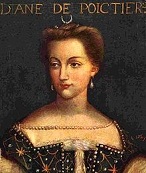
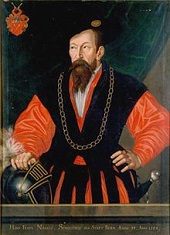

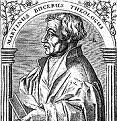


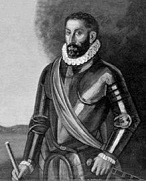


1536 The cent.-long Tudor Reconquest of Ireland begins (ends 1730), with English under Henry VIII forcing Irish nobles to give up their Gaelic custom of electing chieftains in favor of Roman, er, English-style male primogeniture via the legal mechanism of surrender and regrant, receiving new English feudal titles that change the "Macs and Oes" into Englishmen, incl. the earl of Thomond (O'Briens), earl of Clanrickard (Mac William Burkes), baron of Upper Ossory (MacGillapatricks), and earl of Tyrone (O'Neills) - so they'll become as corrupt as they are? On Jan. 6 New Spain viceroy Antonio Hurtado de Mendoza founds the Colegio de Santa Cruz in Tlatelolco, Mexico, allowing the sons of Aztec nobles to study Latin, rhetoric, philosophy and music, becoming the first univ. in the Americas - no more of that bouncing heads down the pyramid stuff? On Jan. 7 Spanish-born English queen (princess dowager of Wales) Catherine of Aragon (b. 1485) dies in exile in Kimbolton Castle, Huntingdonshire, still claiming to be be England's only rightful queen; she dies after dictating a Letter of Forgiveness to Henry VIII. In Jan. 40-something Henry VIII (b. 1491), who is used to tiring 8-10 horses on each hunt is thrown from his horse during a jousting tournament at Greenwich, lays unconscious for two hours, and becomes partially lame; he never jousts again (beds excepted), and his plentious meat-and-sugar-heavy Henry VIII Royal Diet quickly catches up with the sedentary monarch, who begins developing multiple medical problems, beginning with obesity; his example is followed by the English nobility, and later by the commoners, and their descendants in the U.S.?; meanwhile his servants content themselves with leftover pot vegetables, giving them a healthier diet - that explains fat women like Wynona Judd and Kirstie Alley? On Feb. 2 the city of Buenos Aires (Sp. "fair winds") (Our Lady St. Mary of the Good Winds) (modern-day pop. 2.9M/13.6M) in Argentina on the estuary of the Rio de la Plata is settled by Spanish conquistadors led by Pedro de Mendoza (1487-1537), who began colonizing the year before; Juan de Ayolas (-1537) and Domingo Martinez de Irala (1509-56) lead expeditions up the Parana and Paraguay Rivers in search of a route to Peru; after fighting the Guarani, crossing the Chaco to the Andes, and seizing some booty, Ayola is killed along with his whole co. by the Payagua; meanwhile de Irala escapes, and next year is elected capt. gen. of the Rio de la Plata by his men, going on to relocate the pop. of Buenos Aires to Asuncion in 1841 before the city is abandoned; in 1552 he is confirmed by Charles V as gov., building encomiendas and forcing the native pop. into them. On Feb. 17 the Dynasty of Phantoms ruling the Bandari Jungle in Africa begins as the first Phantom, "the Ghost Who Walks", son of Sir Christopher Standish swears his oath - The Phantom comic strip by Lee Falk and Ray Moore (debuts Feb. 17, 1936). On Feb. 25 Tyrolean Anabapist Hutterites leader Jacob Hutter (b. 1500) is burned at the stake in Innsbruck for heresy. On Mar. 31 after Protestant Geneva revolts against the authority of the duchy of Savoy and repudiates the authority of its Roman Catholic bishop, Swiss forces from Bern under Hans Franz Nageli (Nägeli) (1497-1579) take Lausanne, followed by Vaud (N of Lake Geneva) and other territories from Savoy, who all join the Swiss Confederation; HRE Charles V triumphantly enters Rome and delivers a speech before Vatican officials publicly challenging Francis I of France to a duel; the Bernese who conquer Vaud release writer Francois Bonivard (Bonnivard) (1493-1570), "the Prisoner of Chillon", who goes Protestant after four years of captivity. On Apr. 18 Incan emperor Manco escapes from prison in Cuzco and launches the 10-mo. Siege of Cuzco held by Hernando Pizarro (ends Mar. 1537). On May 2 Queen Anne Boleyn is imprisoned in the Tower of London on charges of adultery with her brother, three gentlemen of the privy chamber, and a court musician, and of conspiring with them against the king's life; on May 14 Thomas Cranmer declares her marriage to Henry VIII null and void - luckily the other eight got away with it? On May 3 Jacques Cartier (1491-1557) orders his men to abduct Iroquois Chief Donnacona (-1539) from the village of Stadacona on modern-day Quebec City to take him back to France with them so he can tell the king his stories of the splendors of the New World; he dies in France in 1539; Cartier first uses the name Canada in his writings - Donna, Donna, my Donnacona? On May 12 the four commoner conspirators are tried, followed by Queen Anne Boleyn and her brother on May 15, and all are convicted of high treason after the court musician confessed under torture to adultery, although the others maintain their innocence; Anne's father Thomas Boleyn and her uncle the duke of Norfolk are instrumental in her kangaroo trial, with Norfolk presiding over the 26 peer judges, then pronouncing her sentence; the trumped-up proceedings of adultery and witchcraft (based on her having a 6th finger and an extra nipple, a goiter on the neck, et al.) get lost; on May 17 the musician is hanged and the four commoners beheaded incl. her brother George Boleyn, and on May 19 Henry VIII has the head of Anne Boleyn (b. 1507) severed from her pretty duckies by expert swordsman (one of the king's inner council) Sir William Kingston (1476-1540) (compliments of his wily advisor Thomas Cromwell) after he last words, "I have a little neck"; on May 20 after Parliament invalidates the marriage to enable it, Henry betrothes Anne's plug-ugly but fertile maid of honor Jane Seymour (1508-37), then marries her on May 30 after a 11-day party; Hans Holbein the Younger becomes court painter to Henry VIII, and makes a Drawing of Plug-Ugly Queen Jane Seymour; Anne's daughter (future queen) Elizabeth is declared a bastard, even though later both Parliament and the king name Henry's children Edward, Mary, and Elizabeth, in that order, as heirs to Henry's throne. On May 23 after Manuel I's request in 1515 is stalled until after his death, Joao (John) III the Pious establishes the Portuguese Inquisition (until 1821), and places the U. of Coimbra under Jesuit control; now those who got too much loot from America can get it redistributed legally after they are rocketed to Hell? - that's smokin' pious of ya, kingey? On May 29 after a meeting between Martin Luther and Protestant leaders from S Germany led by Martin Bucer (1491-1551), the Wittenberg Concord is signed; too bad, Bucer later disavows it on petty technicalities. On June 26 Spanish navigator Andres de Urdanet arrive in Lisbon from the Maluku Islands, completing their circumnatigation of the Earth which began with the Loaisa Expedition of 1525. On June 27 Spanish gov. of Guatemala Pedro de Alvarado y Contreras (1495-1541) founds the city of San Pedro Sula in NW coastal Honduras (modern-day pop. 661K/1.45M), which goes on to become Honduras' 2nd largest city after Tegucigalpa. On July 25 Pizarro's lt. Sebastian de Belalczar founds the city of Santiago de Cali (modern-day pop. 2M/5M), followed by Pasto (1537) (modern-day pop. 480K), and Popayan (Jan. 13, 1537) (modern-day pop. 439K) in the Cauca River Valley of SW Colombia (1536-7); Pizarro's men bring back the potato to Europe. In July after sieging Malmo and Copenhagen, Christian III defeats Count Christopher of Oldenburg, then on Aug. 12 stages a coup on his Roman Catholic-dominated council of state, arresting three bishops, ending the Counts' Feud (begun 1634), officially establishing the Lutheran Church in Denmark and Norway on Oct. 30, and earning him a congratulatory letter from Martin Luther; he pays for the cost of the war by confiscating the property of the Roman Catholic bishops, who are imprisoned until they agree to marry and give up their privileges, although some die in prison in protest; too bad, he uses German mercenaries, who go on to spoil Roman Catholic churches, making the king and his nobles rich, but stinking up Lutheranism, and drawing condemnation from Luther himself; for the next six years German counselors dominate the king, causing a war over control of the kingdom (ends 1542); Iceland also goes Lutheran - it's hard to resist, very hard? In July Turkish adm. Hayreddin Barbarossa, who was called back to Istanbul last year to form a naval fleet to attack the Hapsburg kingdom of Naples captures Otranto, followed by the Castro Fortress and the city of Ugento in Puglia. On Oct. 6 after being condemned in Brussels at the behest of Henry VIII, Lutheran sympathizer William Tyndale (b. 1494) is strangled and then burned at the stake by the Old Skool, who consider the Bible dangerous in the hands of the unlearned for making an "illegal" English trans. of the Bible. Spain invades Provence over the Milan succession; meanwhile Francis I of France goes to war against the Habsburgs again (until 1538), attacking Charles V for the 3rd time by invading Italy and seizing the dominions of the house of Savoy (until 1559), causing Duke Charles III to flee to exile for the rest of his life (until 1553). Parliament passes the First Laws in Wales Act, legally annexing Wales to England as a single state; 2nd act in 1542. The English Parliament declares the authority of the pope void in England; meanwhile on Oct. 1 after Henry VIII orders the Dissolution (Suppression) of the Monasteries (ends 1541), causing 376 religious houses in England to be dissolved by royal decree, the Pilgrimage of Grace in Yorkshire sees 40K men led by lawyer Robert Aske (1500-37) of Doncaster march through N England protesting the looting of the churches and monasteries by Henry's iconoclastic govt., also seeking relief from tax collectors; pro-Roman Catholic Thomas Howard, 3rd duke of Norfolk negotiates their surrender; Don't Aske is executed for treason next July 12; meanwhile Thomas Cromwell rises to Baron Cromwell of Oakham and Lord Privy Seal, setting up a bureaucratic machine to administer all the income generated by selling Church land and closing monasteries; too bad his big schmuck arrogance and venality causes him to make a lot of enemies; Thomas Mildmay (1515-66) gets a lucrative job as royal admin. of the ecclesiastical revenues annexed to the crown, allowing him to later set up his son Walter Mildmay as privy chancellor and chancellor of the exchequer under Elizabeth I; next year Henry VIII introduces legislation in the Irish Parliament to close the monasteries, which faces considerable opposition, causing only 16 of 400 to be closed, but after regrouping he gets about half closed by the time of his death in 1547 - magic green, cleans like magic? Francisco Pizarro breaks Manco's siege of Lima and corners them at the Temple of Sacsayhuaman, where the brave warriors hold out in a last-ditch stand, the last ones filling their mouths with dirt, scourging their faces, then jumping off the cliff to commit suicide rather than be captured alive; Pizarro then stages savage reprisals, while Manco and his remaining people and refugees retreat over the 12.4K-ft. Colpa Pass (highest in Andes) down into the headwaters of the Amazon in Amazonia to set up a last outpost for their way of life in in Vilcabamba (Willkapampa), the Lost Valley of the Incas (rediscovered in the 20th cent.), with the Chaullay River as boundary; Manco tells his people that if they are forced to accept the white man's gods they are to play along but keep worshiping the ancestral gods under cover. 17-y.-o. dauphin Henri (Henry), Duke of Bourbon (future King Henri II of France) (still in the royal nursery) meets 36-y.-o. lusty widow Diane de Poitiers (1499-1566), wife of the Grand Senechal of Normandy, and she becomes his mistress just in time to enjoy his sexual peak, while his plug-ugly wife Catherine de' Medici (a commoner and despised foreigner) is forced to endure the humiliation; fortunately, she befriends Catherine, who dutifully evicts young Henri from her bed to make him perform his conjugal duties. Cabeza de Vaca and his party of half-starved former conquistadors who started out way back in 1528 in Florida meet up with fellow Spanish conquistadors (slave traders) on the Sinaloa River in NW Mexico on the Gulf of Calif., and after fighting to keep his Indian pals from being turned into slaves, he returns to Spain next year, where he argues for humane treatment for them, bringing his Journal of his fantastic trip, which many think is fiction - but can't put down? Spanish conquistador Diego de Almagro the Elder (1475-1538) founds the city of Valparaiso (Valparaíso) in C Chile (modern-day pop. 284K/930K), named by his lt. Juan de Saavedra after his hometown Valparaiso de Arriba in Cuenca Province, Spain. After receiving orders from Prophet Muhammad in a dream, Ottoman sultan Suleiman the Magnificent orders the rebuilding of the city walls of Jerusalem, building them 2 mi. long and 40 ft. high by 1541; Ottoman court architect Sinan designs the Damascus Gate in the N wall; the water system is overhauled and improved; Suleiman invites Jews to settle there; by 1553 the pop. of Jerusalem is 13,384 incl. 1,650 Jews and Christians. French Protestant William (Guillaume) (Guilhem) Farel (1489-1565) persuades John Calvin to remain in Geneva; after their expulsion in 1538, he talks him into returning in 1541, turning Geneva into the Protestant Rome. About this time the Black Rood of Scotland in Durham Cathedral disappears during all the looting of English Roman Catholic churches. Finnish Catholic Bishop Skytte sends Michael Agricola to Wittenberg, Germany to study theology and language, and he begins translating the Bible into Finnish with the approval of Swedish King Gustavus I. The only surviving copy of Beowulf from Anglo-Saxon times (originally written in the 8th cent. C.E.) narrowly escapes destruction when Henry VIII empties the monasteries. Architecture: Henry VIII establishes the 350-acre Hyde Park in C London after taking land from Westminster Abbey for a hunting ground; it opens to the public in 1637, becoming popular for May Day parades, becoming the largest of the four royal parks forming a chain from the entrance of Kensington Palace through Kensington Gardens and Green Park past the main entrance to Buckingham Palace. Rosso Fiorentino (1494-1540) completes the stucco Gallery of Fontainebleau. Jacopo Sansovino (1486-1570) designs St. Mark's Library in Venice. Science: India Rubber is first mentioned. Cardinal Nicolaus von Schonberg asks Nicolaus Copernicus to make his heliocentric theory known to the learned world, but he is still too chicken - doesn't want to risk becoming extra crispy? Nonfiction: John Calvin (1509-64), Institutes of the Christian Religion (Christianae Religionis Institutio); definitive ed. 1559; founding document of his Reformed Church, pub. in Geneva, making converts in Paris, Lyons, Grenoble, et al.; becomes a roadmap of Protestant thought. Martin Luther (1483-1546), Table Talk (Colloquia Mensalia, or Divine Discourses at His Table); full of golden nuggets of wisdom, e.g., "If a Jew, not converted at heart, were to ask baptism at my hands, I would take him to the bridge, tie a stone round his neck, and hurl him into the river; for those wretches are wont to make a jest of our religion." Nicholas Massa, Manual of Anatomy; fairly knowledgeable? Paracelsus (1493-1541), Grosse Wundartzney (Wundarznei). Cardinal Reginald Pole (1500-58), Pro Ecclesiasticae Unitatis Defensione. Art: Michelangelo (1475-1564), The Last Judgment; on the altar wall of the Sistine Chapel (1536-41). Music: Heinrich Finck (1445-1527), Schone Auserlesene Lieder (posth.); songbook. Philippe Verdelot (1485-1550), The Madrigal Book (Spain); first songbook with lute accompaniment. Births: English soldier (Roman Catholic martyr) Thomas Howard, 4th Duke of Norfolk (d. 1572) on Mar. 10; son of Henry Howard (1516-47); grandson of Thomas Howard, 3rd duke of Norfolk (1473-1554); older brother of Henry, 1st earl of Northampton (1540-1614); father of Philip Howard (1557-95). Italian Dominican priest-astronomer Egnatio (Egnazio) (Ignazio) Danti (Pellegrino Rainaldi Danti) (d. 1586) in Apr. in Perugia. English almost-king Guildford (Guildord) Dudley (d. 1554); son of John Dudley (1502-53) and Jane Dudley; brother of Robert Dudley, earl of Leicester (1533-88); husband of Lady Jane Grey (1537-54). Scottish nobleman James Hepburn, 4th Earl of Bothwell (d. 1578); husband of Mary Stuart, Queen of Scots (1567-70). Italian painter Vincenzo Campi (d. 1591); brother of Giulio Campi (1502-72) and Antonio Campi (-1591). English military leader Arthur Grey, 14th Baron Grey de Wilton (d. 1593); eldest son of the 13th baron Grey de Wilton and Mary, daughter of the 1st earl of Worcester. Ottoman Muslim religious scholar Saduddin Efendi (d. 1599). Spanish explorer Juan Fernandez (d. 1602). Dutch nobleman Count John (Johann) VI the Elder of Nassau-Dillenburg (d. 1606) in Dillenburg; 2nd son of Count William I and his 2nd wife Juliane of Stolberg-Wernigrode (brother of William I of Orange); husband (1559-) of Elisabeth of Leuchtenberg (1537-79); father of 13 children incl. Count John VII (1561-1623). English "Gorboduc" statesman-poet (lord high treasurer) Thomas Sackville, 1st Earl of Dorset and Baron Buckhurst (d. 1608) in Buckhurst, Sussex; son of Richard Sackville (1507-6) (maternal cousin of Anne Boleyn); created baron of Buckhurst in 1567, and earl of Dorset in 1604; the real Shakespeare? Polish poet Jan Kochanowski (d. 1612) in Sycyna. Swiss physician Felix Platter (Plater) (d. 1614) on Oct. 28 in Basel; son of Thomas Platter the Elder (1499-1582); brother of Thomas Platter the Younger (1574-1628); first proponent of the Germ Theory of Disease? English architect Robert Smythson (d. 1614). English statesman and lord high adm. (cmdr. of the English fleet against the 1588 Spanish Armada) Charles Howard, 2nd Baron Howard of Effingham, 1st Earl of Nottingham (d. 1624) (AKA Howard of Effingham); son of William Howard, 1st Baron of Effingham (1510-73); nephew of Thomas Howard, 3rd duke of Norfolk (1473-1554); created knight of the garter in 1574. Spanish "De Reg" Jesuit historian Juan (John) de Mariana (d. 1624) in Talavera (near Toledo); educated at the U. of Alcala. Deaths: French theologian Jacques Lefevre d'Etaples (b. 1455) (d. 1537?) in Nerac. Scottish philosopher Hector Boece (b. 1465). Dutch humanist scholar Desiderius Erasmus of Rotterdam (b. 1466) in Freiburg; calls Sir Thomas More "Omnium Horarum Homo" (Man for All Seasons). Italian diarist Marino Sanuto the Younger (b. 1466) in Venice. Portuguese actor-poet Gil Vicente (b. 1470). Italian painter Galeazzo Campi (b. 1477). Italian painter-architect Baldassare Peruzzi (b. 1481) on Jan. 6 in Rome. Danish peasant rebellion leader Skipper Clement (b. 1484) on Sept. 9 in Viborg (executed by breaking on the wheel). Spanish-born English queen (princess dowager of Wales) Catherine of Aragon (b. 1485) on Jan. 7 in Kimbolton Castle, Huntingdonshire; dies after dictating a Letter of Forgiveness to Henry VIII. English reformer William Tyndale (b. 1494) on Oct. 6 in Brussels, Belgium (burned at the stake); last words: "Lord, open the king of England's eyes"; "I defy the Pope and all his laws; if God spare my life ere many years, I will cause a boy that driveth the plough, shall know more of the Scripture than thou dost" (reply a a Roman Catholic bishop who told him that he respects the word of the Pope more than that of the Bible". Austrian Anabaptist Hutterites leader Jacob Hutter (b. 1500) on Feb. 25 in Innsbruck (tortured and burned alive for heresy). English queen Anne Boleyn (b. 1507) on May 18 in London (beheaded); they forget to make her a coffin, and her body is buried in an old arrow chest in front of the altar at St. Peter's ad Vincula inside the Tower of London, which is dug up in 1875 during Tower repairs along with the remains of three other women (Margaret Pole, Countess of Salisbury, Lady Jane Grey, Lady Rochford), after which Queen Victoria has each given a proper reburial beneath the altar in new coffins with nametags; the body of Catherine Howard disappears (quicklime)? Dutch Anabaptist leader John of Leiden (b. 1509) on Jan. 22 (executed along with Bernhard Krechting and Bernhard Knipperdolling); their bodies are tortured first, then kept in raised cages above St. Lambert's Church for 50 years. Dutch poet Johannes Secundus (Jan Everaerts) (b. 1511) on Sept. 25 in Saint-Amand; leaves Book of Kisses (Liber Basiorum) (pub. 1541) - the good die young? French dauphin Francis III, duke of Britanny (b. 1518) on Aug. 10 in Touron; his Italian secy. Sebastiano de Montecuccoli confesses under torture to poisoning him, and he is executed on Oct. 7; Francis III's younger brother Duke Henry of Orleans succeeds him as heir to France.
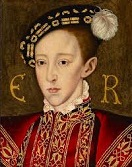






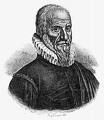
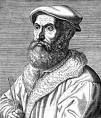



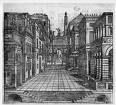

1537 The winter of 1536-7 sees a great frost in England, allowing Henry VIII to travel from C London to Greenwich along the Thames River by sleigh. On Jan. 1 James V of Scotland marries Madeleine de Valois (1520-37), 5th child and 3rd daughter of French king Francis I and Claude of France (daughter of Louis XII) in the Cathedral of Notre Dame in Paris after first visiting France to check out Mary of Bourbon, daughter of the Duke of Vendome (who offers a 100K crown dowry), and dumping her for being a "misshapen hunchback"; too bad, Madeline is little better, and the babe dies of TB on July 7 at Holyrood Abbey in Edinburgh right after they arrive in Scotland. On Jan. 6 Duke Alessandro de' Medici (b. 1510) of Florence is assassinated by his distant cousin Lorenzino de' Medici (1514-48) (AKA Lorenzaccio or Bad Lorenzino) after luring him with his sister widow Laudomia, and Cosimo I the Great de' Medici (1519-74) succeeds him; in 1548 Cosimo pays an assassin to kill Lorenzino in front of his lover's house in Campo San Polo, Venice. In Jan. Henry VIII and Jane Seymour spend a lot of time in bed? On Feb. 3 Silken Thomas FitzGerald, 10th Earl of Kildare (b. 1513) and his five uncles are executed in Tyburn, London for rebellion, and the English Crown tries to capture his 12-y.-o. half-brother Gerald FitzGerald, 11th Earl of Kildare (1525-85), new head of the FitzGerald Dynasty, who is hidden by his aunt Lady Eleanor McCarthy, and seeks to protect him by accepting a marriage offer from Manus O'Donnell (-1564), who in July after the death of his father Sir Hugh Dubh O'Donnell succeeds as king of Tyrconnell in Ulster, Ireland (until 1555); Kildare relative Conn O'Neill (1480-1559) (later 1st Earl of Tyrone) forms the short-lived Roman Catholic Geraldine League incl. the O'Donnells, O'Neills, O'Briens of Thormond et al., allying to restore Lord Kildare to his rightful position and later to overthrow English rule in Ireland. In Feb. Martin Luther writes the Smalcald Articles questioning the primacy of the pope/pontiff/pontifex maximus, which are presented to a meeting of the Schmalkaldic League. On Mar. 25 Charles of Bourbon-La Manche (b. 1489) dies, and Ferrante I Gonzaga (1507-57), HRE Charles V's viceroy of Sicily (1535-46) becomes CIC of the imperial army in Italy. On Apr. 17 after returning from his unprofitable journey to Chile, Diego de Almagro the Elder defeats Francisco Pizarro's troops at Cuzco, claims that it lies within his claim, and occupies it, taking Pizarro's brother Hernando prisoner and declaring himself gov. beginning a 19-year civil war; in Nov. Pizarro gives up attempts at a peace settlement and prepares to invade; meanwhile the native Mapuche (Araucanian) Indians in Chile revolt, beginning the Arauco War, which ends in a push with the Bio Bio River as a permanent frontier until 1883. The big prick finally does it? On May 27 there is a Te Deum sung in St. Paul's Cathedral in London for joy at the quickening of the queen's child; on Oct. 12 sickly Prince Edward VI (d. 1553), son of Henry VIII and Jane Seymour is born, and she dies 12 days later on Oct. 24; Henry wears mourning for the only time for one of his queens. On May 29 Pope Paul III issues the bull Sublimus Dei, declaring that the American native "savages", "being truly men, are apt to receive Christian faith", and "are not to be reduced to slavery", with automatic excommunication for violators; too bad, the Catholic Conquistadors are also under orders to convert them, so they get around the letter of the law by having a priest ask them in Spanish if they accept Christ, and when they don't understand Spanish, that makes them enemies of Christ, allowing them to be enslaved anyway - typical official cover story to allow the systematic extermination of Indios to go on unperturbed? On July 12 the Battle of Abancay in Peru is a decisive V for Spanish troops of Nueva Toledo under Diego de Almagro and Rodrigo Orgonez over troops of Neva Castilla under Alonso de Alvarado, who is captured and escapes, hooking up with the Pizarro brothrs, who raise another army to take him on. On July 17 James V has Lady Janet Douglas, Lady Glamis (b. 1498), sister of his enemy Archibald Douglas, 6th earl of Angus convicted witchcraft andf burned at the stake on Castle Hill in Edinburgh, adding to his image of ruthlessness; after being forced to watch his mother burn, her teenie son John Lyon, 7th Lord Glamis (1521-58) confesses and is imprisoned, then is later released, and his estates confiscated on Dec. 3, 1540, but he gets them restored on Mar. 13, 1543; James V's image probably needs no help after his persecution of the Armstrongs, Humes, Johnstons, Maxwells, Scotts, and other border families with Douglas ties, not to mention his forcing of the earls of Morton and Crawford to give their earldoms to the crown?; Lady Janet's ghost begins haunting Glamis Castle, making a knocking sound mimicking the hammering of the workmen building her scaffold. On Aug. 12 Lutheran Danish-Norwegian king (1534-59) Christian III is finally crowned in Copenhagen Cathedral - pope not invited? On Aug. 15 after hostile Guarani attacks cause Buenos Aires to be abandoned, and Juan de Salazar de Espinoza (Emiliano Gomez Suarez) (1508-60) to lead colonists up the Parana and Paraguay Rivers, they found the seaport of Asuncion (Asunción) on the Paraguay River (modern-day pop. 525K/2.2M); the site becomes the launching point for the Jesuits until they are expelled in 1767. In Aug. a huge Ottoman fleet led by adm. Barbarossa and adm. Lutfi Pasha (1488-1564) captures the Aegean and Ionian islands of the Repub. of Venice, incl. Syros, Aegina, Ios, Paros, Tinos, Karpathos, Kasos, and Naxos, then captures Corfu and raids Calabria, all of which pisses-off Pope Paul III, who calls for a Holy League against the *?!*? infidels; Venetian-born Cecilia Venier Baffo (1525-83), niece of Venetian Doge Sebastiano Venier is captured on Paros and taken to Istanbul, where in 1574 she becomes Valide sultan (co-regent) Nur-Banu ("Princess of Light"), #1 wife of Sultan Selim II and mother of Murad III. French statesman Michel de l'Hopital (1507-73) becomes counselor to the French parliament (until 1547), then becomes chancellor to the king's sister Margaret of France, duchess of Berry. The Lithuanians allied with the Crimean Tartars ravage the Ryazan region, while a 7K-man Polish force under Jan Tarnowski defeats the Russians at the Battle of Starodub on the Babinets River after the voevoda is captured and 13K inhabitants are massacred, then overrun Severia and Gomel (Homel) in Belarus; the Russians counterattack, defeating a 40K-man Lithuanian army at the Battle of Sebezh, then build the fortress of Velizh and devastate the suburbs of Vitebsk, causing a 5-year ceasfire to be signed, granting Gomel to Lithuania, and Sebezh and Velizh to Russia. The fortress of Klis in Croatia is captured by the Ottomans; it is not recaptured until 1648. Hugh Dubh O'Donnell dies, and his son Manus O'Donnell (-1564) succeeds as king of Tyrconnell in Ulster, Ireland (until 1555). Henry VIII reneges on the surrender terms and has the leaders of the Pilgrimage of Grace and similar risings put down and executed for treason, along with leader Robert Aske. Francis I of France appoints William du Bellay gov. of Turin, followed by gov. of the Piedmont in 1540, and he goes on to foster humanist scholars and writers, keeping a large library in Turin. Unniram Koyikal II dies, and Veera Kerala Varma (d. 1565) becomes ruler of Cochin, India. Henry VIII introduces the Protestant Reformation into Ireland, and begins the dissolution of Roman Catholic monasteries, giving a share of the spoils to native chieftains along with English titles to pacify them under the "surrender and re-grant" system, forcing them to surrender their lands then regranting them under English tenure, destroying traditional clan successions; an English commission holds courts throughout Ireland, but respects the Irish right to their own brehon system of laws to keep the peace; too bad, the Irish Celts balk at being Anglicized, and begin fomenting revolt (when not fighting each other). The Spanish found a settlement in Chachapoyas ("warriors of the clouds") on the NE frontier of Peru (elev. 7.6K ft.). Honduras gov. Francisco de Montejo begins crushing a revolt in Higueras (until 1544), and founds Comayagua in Chile; Ines de Suarez (Inés de Suárez) (1507-80) of Extremadura, Spain, whose first husband left her to go to the New World follows him, becoming the first Euro woman in Chile, only to find that he died, then settles in Cuzco, Peru, where she hooks up with new lover Pedro de Valdivia, becoming a female conquistadora. The Mandinka Kaabu (Gabu) (N'Gabu) (Ngabou) Empire of Senegambia in modern NE Guinea-Bissau and Senegal splinters from the Mali Empire (ends 1867). After being ruled by the Western Gangas, Cholas, and Hoysalas since the 4th cent., the modern city of Bangalore in the S Indian state of Karnataka (modern-day pop. 8.7M/12.3M) is founded by Kempe Gowda I (1510-69), vassal of the Vijayanagara Empire, which falls in 1565, after which it changes hands several times until the British capture it in 1799 in the Fourth Anglo-Mysore War; in 2006 it is renamed Bengaluru, becoming known as "the Silicon Valley of India". John Travers, chancellor of St. Patrick's Cathedral in Dublin becomes the first of the Irish Catholic Martyrs who die for their faith (until 1714); on Sept. 22, 1992 Pope John Paul II beatifies 17 of them. The first Roman Catholic hymnal is pub. in Vete. The first conservatories of music are founded, one in Naples for boys, and one in Venice for girls. (St.) Angela Merici (1474-1540) founds the Order of the Ursulines in Brescia in N Italy to educate young girls. Roman Catholic priest Menno Simons (1496-1561) of the village of Witmarsum in Friesland in N Netherlands becomes an Anabaptist (rebaptizer, rejecting infant baptism), severing all ties with the Church, becoming a hunted man. Martin Luther gives a sermon in which he becomes the first to attribute the authorship of the Epistle to the Hebrews in the New Testament not to Apostle Paul but to Apollos of Alexandria, who is mentioned in Acts 18:24-28. Francois Rabelais moves to Montpellier to teach (until 1539). Architecture: Duke Louis X of Bavaria begins Landshut Palace, the first Renaissance palace N of the Alps (finished 1543), modeled after the Palacco del Te in Mantua. Italian architect Andrea Palladio (1508-80) designs Villa Godi in Ludo di Vicenza, Veneto, Italy, becoming his first commission (finished in 1542). Science: French barber surgeon Ambroise Pare (Paré) (1510-90), in the service of Francis I during the attack on Turin discovers that soldiers with gunshot wounds that have not been scalded with the usual boiling oil of elders fare better than those who do, causing him to discard the accepted practice and prepare poultices with more humane cold ingredients incl. egg yolks, turpentine, and rose oil, used by the ancient Romans - it's a triple mess-kit cozy? Andreas Vesalius (1514-64) becomes prof. of anatomy at Padua (until 1544), founding a school that turns up the heat on the subject no matter whom it shocks. Nonfiction: Anon., The Complete Works (Opera Omnia) of Cicero; (4 vols.) (Venice). Anon., Matthew's Bible. Johann Eck (1486-1543), German Trans. of the Bible; commissioned by Roman Catholic duke William IV of Bavaria in Ingolstadt to counter the influence of Martin Luther's German Bible; first German Bible to contain the name "Jehovah" (marginal comment on Ex. 6:3). Gerhard Mercator (1512-94), Map of Flanders (his first). Pedro Nunes (1502-78), Treaty about the Sphere with Theory of the Sun and the Moon (Tratado da sphera com a Theorica do Sol e da Lua); tr. of "Tractatus de Sphaera" by Johannes de Sacrobosco, "Theoricae Novae Planetarum" by George Purbach, and Ptolemy's "Geography"; Treatise in Defense of the Maritime Chart; first discussion of the Rhumb line, a path with constant bearing relative to true north (loxodrome); Treatise About Some Navigational Doubts. Robert Recorde (1510-58), Introductions for to Lerne to Recken with the Pen. Sebastiano Serlio (1475-1554), Trattato di Architettura (6 vols.); spawns "more hack architects than he had hairs on his beard." (Giovanni Lomazzo) Niccolo Tartaglia (1500-57), Nova Scientia; discusses projectile trajectory and the motion of heavy bodies, proposing which discusses projectile trajectory and the motion of heavy bodies, proposing Tartaglia's Theorem, Tartaglia's Theorem, that the trajectory of a projectile is a curved line, and that a projectile fired at an elevation of 45 deg. will travel the farthest, founding the science of Ballistics - heavy balls as a cure for stammering? Art: Jacopo Sansovino (1486-1570), Facade of the Doge's Palazzo Loggietta (Venice). Titian (1477-1576), Portrait of King Francis I. Births: Chinese Ming emperor #12 (1567-72) Longqin ("great celebration) (Zhu Zaihou) (d. 1572) (AKA Prince of Yu) on Mar. 4; son of Jiajing (1507-67); father of Wanli (1563-1620). Japanese overlord (2nd great unifier of Japan) Toyotomi Hideyoshi (d. 1598)on Mar. 17 in Nakamura-ku, Nagoya; husband of Yodo-dono, niece of Oda Nounaga; father of Toyotomi Hideyori (1953-). Italian surgeon-anatomist ("the Father of Embryology") Hieronymus Fabricius (Hieronymo Fabrizio) (Girolamo Fabrici) (d. 1619) on May 20 in Acquapendente, Latium; educated at the U. of Padua; Galileo's personal physician and William Harvey's teacher. English king (1547-53) Edward VI (d. 1553) on Oct. 12 in Hampton Court Palace, Middlesex; son of Henry VIII (1491-1547) and his 3rd wife Jane Seymour (1508-37); firt English monarch raised as a Protestant. English 9-day queen Lady Jane Grey (Dudley) (d. 1554) in Oct.; great-granddaughter of Henry VII and great-niece of Henry VIII; daughter of Henry Grey, 1st duke of Suffolk (1515-54) and Frances Brandon (1517-59), daughter of Henry VII's sister Mary Tudor (1495-1533) and Charles Brandon, duke of Suffolk (1484-1545); husband of Guilford Dudley (1536-54). Swedish king (1568-92) Johan (John) III Vasa (d. 1592) on Dec. 20 in Stegeborg Castle; 2nd son of Gustav I Vasa (1496-1560) and Margarete Leijonhufvud (1516-51). Spanish Jesuit scholar Francisco Ribera (d. 1591) in Vallacastin; confessor of Teresa of Avila. Scottish lord chancellor of Scotland (1568-93) John Maitland, 1st Lord Maitland of Thirlestane (d. 1595); 2nd son of Sir Richard Maitland; knighted in 1581. Korean field marshal Gwon (Kwon) Yul (d. 1599). Italian architect-sculptor Giacomo della Porta (d. 1602) (b. 1533)? in Porlezza, Lombardy. Deaths: Italian Florentine painter Lorenzo di Credi (b. 1459) in Florence. Austrian organist-composer Paul Hofhaimer (b. 1459). German satirist Thomas Murner (b. 1475) in Oberehnheim, Alsace. French noble Charles of Bourbon-La Manche (b. 1489) on Mar. 25 in Amiens. English Pilgrimage of Grace leader Robert Aske (b. 1500) on July 12 in York (hanged). English queen (1536-7) Jane Seymour (b. 1508) on Oct. 24 in Hampton Court Palace (postnatal complications from the birth of Edward VI). Florentine duke (1532-7) Alessandro de' Medici (b. 1510) on Jan. 6 (assassinated). Irish rebel Silken Thomas, 10th earl of Kildare (b. 1513) on Feb. 3 in Tyburn, London (executed for treason).
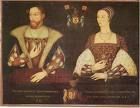



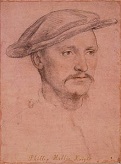

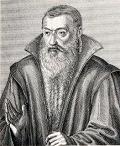

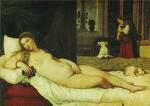
1538 In Feb. Pope Paul III assembles the Holy League consisting of the papacy, Spain, the HRE, the Repub. of Venice, and the Maltese Knights to fight the infidel Muslim Ottoman fleet. On Mar. 10 English ambassador to the Holy Roman Empire Sir Philip Hoby (Hobby) (Hobbye) (1505-58) arrives in Brussels with painter Hans Holbein the Younger on a mission from Thomas Cromwell to paint a portrait of Christina of Denmark (1521-90) (daughter of Christian II) for Henry VIII, who sends them to France in Aug. to paint more eligible babes incl. Princess Margaret of France, Antoinette, duchess of Guise, Anna of Lorraine et al. On Apr. 4 (Apr. 13 Old Style) Ivan IV the Terrible's mother Elena Glinskaya (b. 1510) is poisoned, and her favorite young boyar Ivan Ovchina-Telepnev-Obolensky (-1539) takes control as regent for the young tsar. On Apr. 26 Diego de Almagro the Elder (b. 1475) is defeated by Pizarro at Salinas (near Cuzco), and executed, leaving son Diego de Almagro the Younger to carry on his name in Peru; meanwhile the Spanish gain control of 12.5K-ft. alt. Lake Titicaca in the Andes SE of Cuzco. On May 17 Afghan rebel Sher Shah ("Tiger King") Suri (Farid Khan)(1486-1545) drives out Mogul emperor Humayun and becomes emperor of Delhi (until May 22, 1545), founding the Suri Dynasty (ends 1556), going on to coin the term "Rupiya" (Rupee) (Sansk. "rupyakam" = silver coins) for a silver coin weighing 178 grains; he also mints copper Dam coins and gold Mohur coins, which the Mughal emperors later standardize. On June 18 Francis I and HRE Charles V sign the nice 10-year Treaty of Nice through the mediation of Pope Paul III, ending their 1535 war over Milan inconclusively, giving Francis most of the Piedmont. On July 25 Spanish conquistador Francisco de Orellana founds the city of (Santiago de) Guyaquil, Ecuador (modern-day pop. 3.5M/5M), then heads N, entering the Cauca River Valley in Colombia in search of the Big Score, AKA El Dorado - by the 20th cent. it turns out be, not golden powder, but white? On Aug. 4 after sending future archbishop (of St. Andrews) David Beaton to scout out a new French wife, James V of Scotland marries Mary of Guise-Lorraine (1515-60), daughter of Claude de Lorraine, duke of Guise, and sister of Duke Francois of Guise and Cardinal Charles of Lorraine, a babe made more desirable by being approached by Henry VIII, who scares her into his arms; the Auld Alliance is reaffirmed, French influence in Scotland jumps, and Henry VIII is royally pissed-off; the dowries for James' two French marriages total £168,750, 5x what his daddy James IV got from stingy Henry VII in 1503 - now if they will just stay Roman Catholic, the Auld Alliance will keep them from being absorbed by Protestant England? On Aug. 6 the city of Bogota (Bogotá) (Santa Fe de Bogota on the Bogota Plateau i (modern-day pop. 8M/10M) s founded on the site of the Chibcha town of Bacata by Spanish conquistador Gonzalo Jimenez de Quesada (1495-1576), who began moving up the Magdalena River in 1536 on a commission from the govt. of Santa Marta on the coast, defeating and sacking Chibcha chiefdoms along the way; he names the new city after his native town of Santa Fe. On Sept. 28 the Battle of Preveza in NW Greece between the Ottomans under Adm. Hayreddin Barbarossa and the Holy League under Adm. Andrea Doria is a V for the Ottomans, securing Turkish dominance of the Mediterranean for 33 years (until 1571); one tiny bright spot for Christ, the Venetians capture Castelnuovo (Herceg Novi) in the Bay of Kotor in Montenegro (until 1539). In Sept. the Siege of Diu begins when Mamluk sultan (since 1525) Hadim Suleiman Pasha sends a fleet of 72 ships from Aden (largest Ottoman fleet in the Indian Ocean) to support the sultan of Gujarat, and they give up after a Portuguese relief fleet arives and the Gujarat sultan fails to back them up; the Portuguese maintain control of Diu until 1961. On Nov. 30 the city of La Plata (Ciudad de la Plata de la Nueva Toledo) (modern-day Sucre) in SC Bolivia (modern-day pop. 30K) is founded by Pedro Anzures, Marques de Campo Redondo, becoming the home of the Roman Catholic metropolitan see of Bolivia. In Dec. James V's widely hated Lutheran-persecuting chief counselor David Beaton (1494-1546) is appointed a cardinal. Ferdinand I of the Hapsburgs becomes king of a split Hungary, with John I Zapolya claiming the other half, but since he is childless he magnanimously agrees to let the crown pass to Ferdinand upon his death. Henry VIII ensures the popularity of the Anglican Church by abolishing the Roman Catholic monasteries, relics, and shrines in S England and sharing the loot with his non-Catholic pop.; Thomas Cranmer carries out his orders for the desecration of the profitable shrine of St. Thomas Becket in Canterbury Cathedral (incl. burning his bones after he is summoned to face charges of treason and fails to appear in court and is found guilty in absentia, his shrine's treasures carried away in two coffers and 26 carts), and the abolition of many Roman Catholic church festivals; on Jan. 23, 1888 a skeleton is found in Becket's crypt of a 6'2" 50-y.-o. man with a fractured skull, but since it doesn't fit the eyewitness descriptions that the crown of his head was knocked off, the jury is still out; in Sept. informed that he needs his own non-Catholic Bible to prove his independence from the papacy, Henry is handed a copy of dead Tyndale's "illegal" Bible (printed in Paris) without knowing it, and approves it, and the English govt. directs every parish in England to purchase a Tyndale Bible of the largest size possible, to be set up in each church for easy reading by parishoners; Cranmer goes on to work to unite the new Church of England with the German Lutheran Church, and invites Protestant refugees to England, incl. Peter Martyr (Pietro Martire Vermigli), and Bernardino Ochino. The Moldavians invade the Pakutia again, and are repulsed, pissing-off the Ottoman sultan, who removes the Moldavian hospodar and utter the soundbyte: "He has disturbed the Porte's best friend, the king of Poland." Havana is burned by slaves and French pirates - send some more of them ships with ballasts of gold? The Abyssinian city of Axum is captured by Mohammed, Prince of Leila. Pozzuoli on the Bay of Naples is ruined by another earthquake. The S Burmese kingdom of Toungoo (on the Sittoung River) conquers the Mons kingdom of Pegu. Ivan Ovchina is thrown in prison by the boyars. John Calvin is expelled from Geneva and settles in Strasbourg, Germany; meanwhile the Lutheran U. of Strasbourg in Alsace, France is founded by Johannes (Jean) Sturm (1507-89) as the first humanistic Protestant Gymnasium, becoming a univ. in 1621 and a royal univ. in 1631, becoming the 2nd largest univ. in France in modern times after Aix-Marseille U.; students incl. Angelus Silesius and Johann Wolfgang von Goethe. Two engineers trusted with the restoration of the walls of the Old City of Jerusalem mistakenly leave Mt. Zion and King David's Tomb outside the walls, pissing-off the sultan, who has them executed. Mimar Sinan (1489-1588) becomes chief architect to the Ottoman sultan (until 1588), going on to build a bunch of magnificent mosques. Nostradamus is accused of heresy after he remarks to a workman casting a bronze statue of the Virgin that he is making devils; the Inquisitors order him to go to Toulouse, but he flees from the Church authorities for the next six years. The names "America" and "North America" are used by Gerardus Mercator for the first time in his maps. Architecture: Michelangelo begins planning a square (trapezoid) for the Civic Center of Rome and the buildings facing it, symbolizing Rome as the center of the world. Inventions: The Diving Bell is invented by Guglielmo de Lorena of Italy. Nonfiction: Sir Thomas Elyot (1499-1546), Bibliotheca; English-Latin dictionary. Melanchthon (1497-1560), Ethica Doctrinae Elementa. Art: Titian (1477-1576), Presentation of the Virgin in the Temple; Adonis with His Dog; Venus of Urbino (The Urbino Venus); commissioned by Guidobaldo II della Rovere, Duke of Urbino (1514-72). Plays: John Bale (1495-1563), A Comedy Concerning the Three Laws of Nature, Moses and Christ, Corrupted by the Sodomytes, Pharisees and Papystes Most Wicked; stage directions incl. "Let Idolatry be decked like an old witch, Sodomy like a monk of all sects, Ambition like a bishop, Covetousness like a Pharisee or spiritual lawyers, False Doctrine like a popish doctor, and Hypocrisy like a gray friar"; A Tragedy; or Enterlude Many Jesting the Chief Promyses of God Unto Man; The Temptacyon of Our Lorde; A Brefe Comedy or Enterlude of Johan Baptystes Preachynge in the Wilderness; Kynge Johan (King John); first English historical drama, which rails against the Roman Catholic Church, claims that King John was a Lollard, and was poisoned for it by a monk of Swinestead; "This noble Kynge Johan, as a faythfull Moses/ Withstode proude Pharao for his poore Israel". Paul Rebhun (1506-40), Hochzeitsspiel auf die Hochzeit zu Kana (verse drama). Poetry: Clement Marot (1496-1544), Thirty Psalms of David. Births: German "De Sphaera" Jesuit astronomer-mathematician Christopher Clavius (d. 1612) (b. 1537?) on Mar. 25 in Bamberg, Bavaria Italian duke of Mantua and Montferrat (1550-87) Guglielmo (William) I Gonzaga (d. 1587) on Apr. 24 in Mantua; 2nd son of Federico II Gonzaga (1500-40) and Margaret Palaeologina of Montferrat. Itlian Mannerist painter-architect-writer Gian (Giovanni) Paolo Lomazzo (d. 1600) on Apr. 26 in Milan; goes blind in 1571. Italian Roman Catholic Church historian and cardinal (1596-) Caesar Baronius (Cesare Baronio) (d. 1607) on Aug. 30 in Sora, Naples; pupil of St. Philip de Neri; prevented from becoming pope by Spain because of his support of papal claims on Sicily; coins the term "Dark Ages" for the period from 500-1100 C.E. Italian archbishop-cardinal of Milan (St.) Carlo (Charles) Borromeo (d. 1584) on Oct. 2 in Milan; born in his father's Arona Castle on Lake Maggiore; canonized in 1610. Italian poet-dramatist-diplomat Giovanni Battista Guarini (d. 1612) on Dec. 10 in Ferrara; father of singer Anna Guarini, contessa Trotti (1563--98). English MP and writer Reginald Scott (Reynold Scot) (d. 1599) in Smeeth, Kent; educated at Hart Hall, Oxford U. Scottish poet-jurist Sir Thomas Craig (d. 1608); educated at the U. of St. Andrews. Flemish botanist-physician Matthias de Lobel (l'Obel) (Matthaeus Loelius) (d. 1616) in Lille; namesake of the Lobeliacae family of latex-producing New World plants incl. Indian tobacco. Deaths: Spanish conquistador Diego de Almagro the Elder (b. 1475) in Cuzco, Peru (executed). Spanish novelist Fernando de Rojas (b. 1475). German artist-architect Albrecht Altdorfer (b. 1480) on Feb. 12 in Regensburg. French-born queen consort of Aragon, Naples, Sardinia, and Sicily (1505-16) on Oct. 18 in Lliria (N of Valencia), Spain. German duke of Cleves (1521-38) John III the Peaceful (b. 1490) on Feb. 6. Italian duke of Urbino (1508-38) Francesco Maria I della Rovere (b. 1490) on Oct. 20 in Pesaro (poisoned); his death is portrayed in Elizabethan theaters, becoming the play "The Murder of Gonzago", referenced in William Shakespeare's "Hamlet", and reworked into "The Mousetrap". Russian grand princess consort (1526-38) Elena Glinskaya (b. 1510) on Apr. 4 (poisoned). Moorish ex-king of Granada Boabdil (Abu Abdullah) (b. ?) in Morocco; KIA in a war for the king of Fez against the king of Morocco.


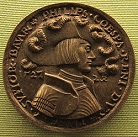

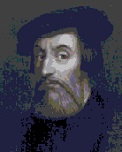

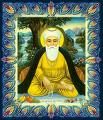


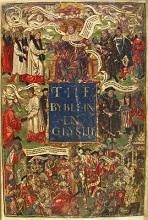
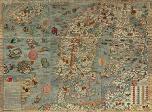
1539 On Jan. 12 the Treaty of Toledo ends the conflict between Charles V and Francis I; Roman Catholic Spain and France are now allies against England, worrying Protestant English king Henry VIII. On Apr. 17 Roman Catholic Saxon duke (since 1500) George the Bearded (b. 1471) dies, and his Protestant brother Henry IV the Pious (1473-1541) becomes duke of Saxony (until Aug. 18, 1541), making Lutheranism the state religion. In Apr. the Statute of Six Articles (against Lutheranism), engineered by Thomas Cromwell is passed; Hugh Latimer resigns as bishop of Worcester in July; Edmund Bonner is made bishop of London, supporting Henry VIII's doctrine of the supremacy of the king in both spiritual and temporal matters; Cromwell rises to Lord Great Chamberlain - meaning, one mistake and he loses his head? On May 18 Pizarro's lt. Hernando de Soto (1496-1542), having returned to Spain as a hero and married Isabel (Ines) del Bobadilla (1505-43) (daughter of a relative of Queen Isabella) in 1537, and obtained the governorship of Cuba and a royal patent to colonize the Am. Gulf coast and search for a passage to the Orient, sets sail from Spain on seven ships with 620 volunteers, 200+ horses and 500 livestock, reaching Port Charlotte (Tampa Bay?), Fla. on May 30, while his wife Isabel becomes the first woman gov. of Cuba, watching every day for his return; on Dec. 25 he celebrates the first Christmas in Tallahassee; too bad, he ends up stumbling around the Am. SE and killing tens of thousands of aborigines, incl. by burning their cities, but never sees the ocean again, getting killed on the Mississippi River in 1543. On July 8 after being sent by Hernan Cortes, Francisco de Ulloa (d. 1540) leaves Acalpulco in three small ships to seek the mythical Strait of Anian leading to the Gulf of St. Lawrence, reaching the Gulf of California, which he calls the Sea of Cortes; on Sept. 12 after one ship is lost in a storm, he resumes his voyage, saling S along the E coast of the Baja California Peninsula, landing at the Bay of La Paz to take on supplies, then rounding the tip and sailing N along the W shore in the Pacific Oean, reaching 28 deg. N near Isla de Cedros before bad weather forces him to turn back, until his ship is swept inland by a tsunami, causing it to become known as the Lost Ship of the Desert; too bad, his reports are used to depict Calif. as an island. In Aug. Hans Holbein delivers a deceptively attractive portrait of Anne of Cleves to Henry VIII, who is smitten; the marriage contract is finalized at Hampton Court on Oct. 6; Anne arrives on Dec. 11 at Calais, waiting for a favorable wind to carry her to Dover while Henry waits at Greenwich; she lands at Deal on Dec. 27 and heads for Rochester. In Sept. the Ottomans under Adm. Hayreddin Barbarossa capture the islands of Skiathos, Skyros, Andros, and Serifos from the Repub. of Venice, and recapture Castelnuovo. On Dec. 8 German Duke Philip the Contentious (1503-48) of Palatinate-Neuburg (based in Heidelberg) visits the court of Henry VIII of England to woo his daughter Bloody Mary, meeting with her on Dec. 17 in Hertford Castle, presenting her a gift and kissing her; too bad, since he is related to Henry VIII's 4th wife Anne of Cleves he sends him packing, and despite visiting England again 3x, he only gets to see her once - if they had married and she had become a Protestant, how many would have been saved from burning? Francisco's brother Gonzalo, gov. of Quito leads an expedition into the Andes to find and capture Inca king Manco, and it reaches the upper Amazon, but is ambushed with giant boulders rolled onto his men, killing 36, causing him to wait for reinforcements; Manco taunts him by telling him that he's killed 2K Spaniards and they're next?; meanwhile Manco harbors Spanish and other refugees, incl. enemies of the Pizarros, which turns out to be his big mistake? China attacks Vietnam. After an invasion by rival king Tabinshwehti of the smaller kingdom of Toungoo, witless king (since 1526) Takayutpi (b. 1511) loses the Battle of Naungyo and flees to Prome, begging for help, then falls ill and dies near Maubin while trying to collect war elephants, ending the Hanthawaddy Kingdom in S Burma (founded 1287), allowing the Taungoo Dynasty to be founded in Burma, becoming the largest empire in SE Asia until it collapses in 1599, gobbling up Siam, Manipur, the Chinese Shan states, and Lan Xang. The first criminal court in England is established at Old Bailey on the W wall of London (destroyed in 1666). Ivan Ovchina dies in prison, and the boyars take control of the infant tsar. Sebastian de Belalcazar meets German adventurer Nikolaus Federmann (1505-42), an agent of the Welser banking family of Augsburg (rivals of the Fuggers) as he heads towards the Bogota plateau, and they get into a fight with each other and Gonzalo Jimenez de Quesada over jurisdiction, which the Spanish crown resolves, confirming Belalcazar as gov. of Popayan; Belalcazar, accompanied by Gonzalo Jimenez de Quesada and Federmann explores the Magdalene River Valley in C Colombia. New Spain viceroy Antonio de Mendoza sends Franciscan friar Sancho Panza, er, Fray Marcos de Niza (1495-1558) N from Mexico City to investigate reports by Cabeza de Vaca of the legendary Seven Cities of Cibola; he reaches the Zuni (Zuñi) pueblos of New Mexico and returns with glowing reports that impress Coronado - the women go around showing what? The Spanish under Gomez de Alvarado found the settlement of Leon de Huanuco (Huánuco) in the Inca town of Yarowilca on the NE frontier of Spanish Peru, moving in 1541 to the Pilco Valley. Chudovo in W Russia is first mentioned. A royal edict commands the French to confine shitting to private bathrooms in their own homes - except in New Orleans? James V of Scotland issues the gold Bonnet Piece, a coin with his portrait on one side wearing a bonnet instead of a crown, and an imperial crown on the other. Juan Pablos (Giovanni Paoli) establishes the first printing press in the New World in Mexico, its first pub. being La Escala Espiritual de San Juan Climaco. Westminster Abbey in London becomes a cathedral after becoming the seat of a 1-time bishop; in the reign of Elizabeth I it becomes headed by a dean. The Maltese Falcon is sent by the Knights Templar to HRE Charles V of Spain :) France holds a public lottery. Wittenberg prof. Georg Joachim (Rheticus) journeys to Frauenberg to study Nicolaus Copernicus' ms. on the heliocentric theory. Inventions: The first Christmas Tree is displayed in Strasbourg Cathedral; meant to represent the Garden of Eden, it is hung with apples. Nonfiction: Martin Bucer (1491-1551), Strasburg Liturgy; for public confession of sins; "This is a faithful saying, and worthy of all acceptance: that Christ Jesus came into the world to save sinners." (1 Tim. 1:15) John Calvin (1509-64), Commentary on the Epistle to the Romans. Miles Coverdale (1488-1569), The Great Bible (fall); the first English Bible, commissioned by Thomas Cromwell and pub. by the English govt., becoming the official English version for the Anglican Church; the cover shows Henry VIII at the top, with Christ whispering into his ear as he passes on the word of God to Archbishop Cranmer and Cromwell, who passes it to the clery and laymen, who cry "Vivat Rex" (God save the king); Cromwell orders one to be housed in every church in England; "Go to now (most dear reader) and sit thee down at the Lord's feet and read his words, and, as Moses teacheth the Jews, take them into thine heart, and let thy talking and communication be of them when thou sittest in thine house, or goest by the way, when thou lyest down, and when thou riseth up. And above all things fashion thy life and conversation according to the doctrine of the holy ghost therein." (preface) Sir J. Elliott, Cookbook - or, why heart-unhealthy English cooking sucks? Antonio de Guevara (1481-1545), Lives of the Ten Emperors; Libro de los Inventores del Arte de Marear (Valladolid); Aviso de Privados y Doctrina de Cortesanos; the concept of the courtier and the court society; "As far as religion is concerned, if one wakes up in the middle of night, it is to laud the Lord in the Divine worship. But at the court, one stays awake all night infinite times, for no other reason than to keep up with people (el mundo)"; The Golden Letters (Epistolas Familiares) (1539-45) (Valladolid); an internat. hit. Olaus Magnus (1490-1557), Map of Scandinavia; first accurate large-scale map of a large Euro region. Melanchthon (1497-1560), De Officio Principum. Richard Taverner (1505-75), The Taverner Bible; a revision of the Matthew Bible; doesn't make much of a splash because of tardy timing. Richard Taverner (1505-75) (tr.), Proverbs or Adages by Desiderius Erasmus Gathered Out of the Chiliades and Englished. Art: Hans Holbein the Younger (1497-1543), Portrait of Anne of Cleves. Il Sodoma (1477-1549), The Mystical Marriage of St. Catherine. Music: Georg Forster (1514-68), Frische Teutsche Liedlein (secular songs) (1539-56). Plays: The Gentse Spelen, a collection of allegorical plays is performed at Ghent. Births: French lawyer-scholar (Calvinist-turned-Roman Catholic) Pierre Pithou (Petur Pithoeus) (d. 1596) on Nov. 1 in Troyes. English playwright George Gascoigne (d. 1578). English soldier-navigator Sir Humphrey Gilbert (d. 1583) in Compton, Devonshire; half-brother (mother's side) of Sir Walter Raleigh; educated at Eton School, and Oxford U.; knighted in 1570. Swiss engraver Jost Amman (d. 1591). Italian Socinianism founder Faustus Socinus (Faust Socyn) (Fausto Paolo Sozzini) (d. 1604) in Siena; nephew of Laelius Socinus (1525-62). Spanish statesman (secy. of Philip II) Antonio Perez (d. 1611) in Valdeconcha, Guadalajara. Spanish soldier-historian ("El Inca") Garcilaso de la Vega (d. 1616) in Cuzco, Peru; son of conquistador Sebastian de la Vega y Vargas. English lord Edward Seymour, 1st Earl of Hertford (d. 1621); husband of Catherine Grey (1540-68), sister of Lady Jane Grey (1537-54); father of Edward, Lord Beauchamp (1561-1612) and Thomas Seymour (1563-1619). Deaths: Indian Sikhism founder Shri Guru Nanak Dev Ji (b. 1469) - sounds like computer system programming jargon? German duke of Saxony (1500-39) George the Bearded (b. 1471) on Apr. 17 in Dresden. Scottish archbishop James Beaton (b. 1473). Italian diplomat-cardinal Lorenzo Campeggio (b. 1474) on July 25. Italian marquesa of Mantua (1490-1539) Isabella d'Este (b. 1474) on Feb. 13. English politician-diplomat Thomas Boleyn (b. 1477) on Mar. 12. Italian metallurgist Vannoccio Biringuccio (b. 1480). Spanish explorer-scholar Ferdinand Columbus (b. 1488). Burmese Hanthawaddy king #18 (last) (1511-39) Thushin Takayutpi (b. 1511) in Ingabin (near Maubin).